I am thrilled to take you on an exciting journey through the most iconic landmarks in the Philippines. As a country with a rich history, vibrant culture, and breathtaking natural beauty, the Philippines is home to numerous landmarks that captivate the imagination, inspire awe, and leave a lasting impression on every traveler’s heart. From the world-famous Banaue Rice Terraces to the picturesque Taal Volcano, we will explore 50 must-visit landmarks organized by major region. So, come with me as we embark on this incredible adventure and discover the Philippines’ hidden gems.
Table of Contents
Luzon Region Landmarks in the Philippines
In the Luzon region of the Philippines, a tapestry of history and natural splendor unfolds, offering an array of iconic landmarks. As the largest and most populous island in the archipelago, Luzon is a treasure trove of cultural and historical gems. It’s home to Intramuros, Manila’s historic walled city that speaks volumes of the Spanish colonial era with its ancient fortifications and majestic churches. The breathtaking Banaue Rice Terraces, carved into the mountainside over 2,000 years ago, showcase the ingenuity of ancient Filipino tribes. Luzon also boasts the picturesque Taal Volcano, known for its scenic beauty and unique location within a lake. From the political significance of Malacañang Palace to the heroic tales echoed in Corregidor Island, and the architectural marvels like Paoay Church in Ilocos Norte, Luzon encapsulates a diverse heritage, making it an indispensable part of any Philippine landmark exploration.
Banaue Rice Terraces, Ifugao – Ancient terraced rice fields
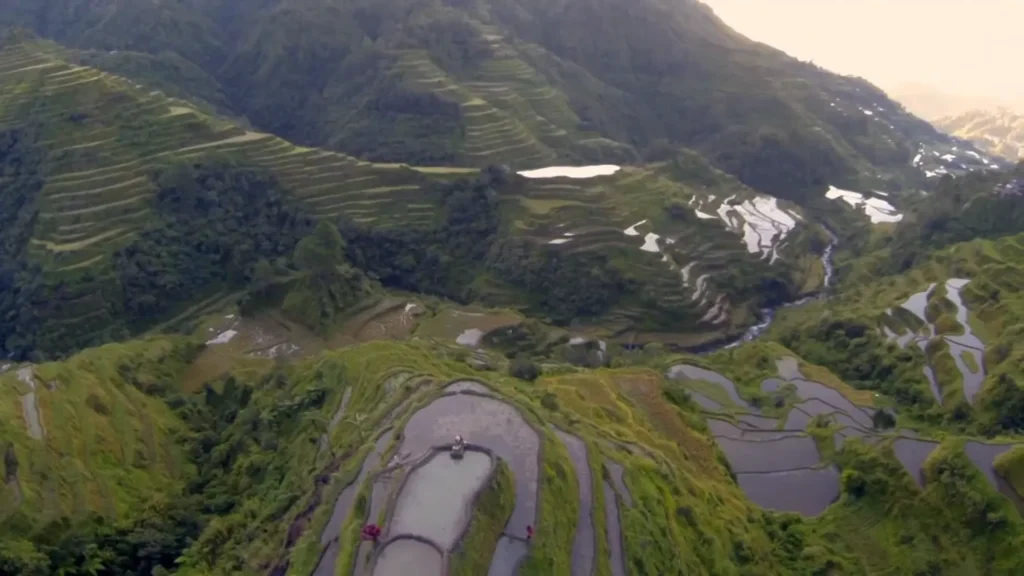
Nestled in the heart of Ifugao in the Philippines, the Banaue Rice Terraces are a stunning testament to the ingenuity and perseverance of ancient peoples. These magnificent terraces, carved into the mountains over 2,000 years ago, are not just a picturesque landscape but also a UNESCO World Heritage Site, reflecting a profound harmony between human cultivation and the natural world.
The Banaue Rice Terraces, often referred to as the “Eighth Wonder of the World,” are a marvel of ancient engineering. They were built primarily by hand, with minimal use of modern tools, showcasing the Ifugaos’ extraordinary skill in irrigation, stonework, and earthwork. The terraces follow the natural contours of the mountains and are fed by an ancient, intricate irrigation system from the rainforests above.
Each terrace is like a step in a giant staircase, stretching up to the sky and offering breathtaking views at every turn. These rice paddies are still used today, perpetuating traditional farming methods and preserving a way of life that has been passed down through generations.
Visiting the Banaue Rice Terraces offers a glimpse into the rich cultural heritage of the Ifugao people. The experience is both humbling and enlightening, providing a window into the past and a deeper understanding of the relationship between humans and the environment. It is a place where the past continues to breathe and thrive in the present, inviting travelers to marvel at a landscape that is both a work of art and a living testament to human endeavor.
Intramuros, Manila – Historic walled area within Metro Manila
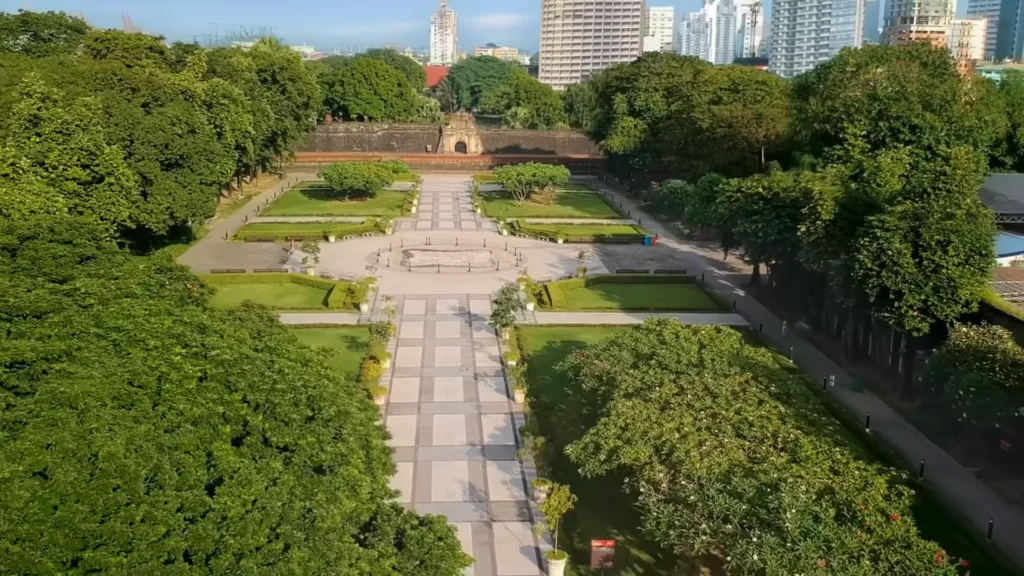
In the bustling city of Manila lies Intramuros, a historic walled area that stands as a testament to the Philippines’ rich and varied past. Known as the “walled city of intramuros” it is a relic of Spanish rule, offering a journey back in time through its ancient streets and preserved architecture.
Enclosed within massive stone walls and moats, Intramuros was the seat of government and political power during the Spanish era. Today, it houses significant historical landmarks, including Fort Santiago, a citadel used by the Spanish as a defensive fortress and prison. The fort is filled with history, from its role in the Philippine Revolution to its use as a detention facility during World War II.
As you meander through the cobblestone streets, you will encounter the San Agustin Church, the oldest stone church in the country and a UNESCO World Heritage Site. This church is an architectural marvel with its Baroque design and stunning interior adorned with intricate frescoes and religious artifacts.
Intramuros also includes other points of interest such as the Manila Cathedral, an iconic symbol of Catholicism in the Philippines, and Casa Manila, a museum that replicates a 19th-century Spanish colonial house. The area is also home to several educational institutions, quaint shops, and restaurants, allowing visitors to immerse themselves in both the historical and contemporary aspects of Filipino life.
A visit to Intramuros is more than just a tour of historical landmarks; it is an experience that connects you to the soul of the Philippines. Walking through Intramuros is like flipping through the pages of a history book, where each corner tells a story of struggle, resilience, and the enduring spirit of the Filipino people.
Mayon Volcano, Albay – Famous for its perfect cone shape
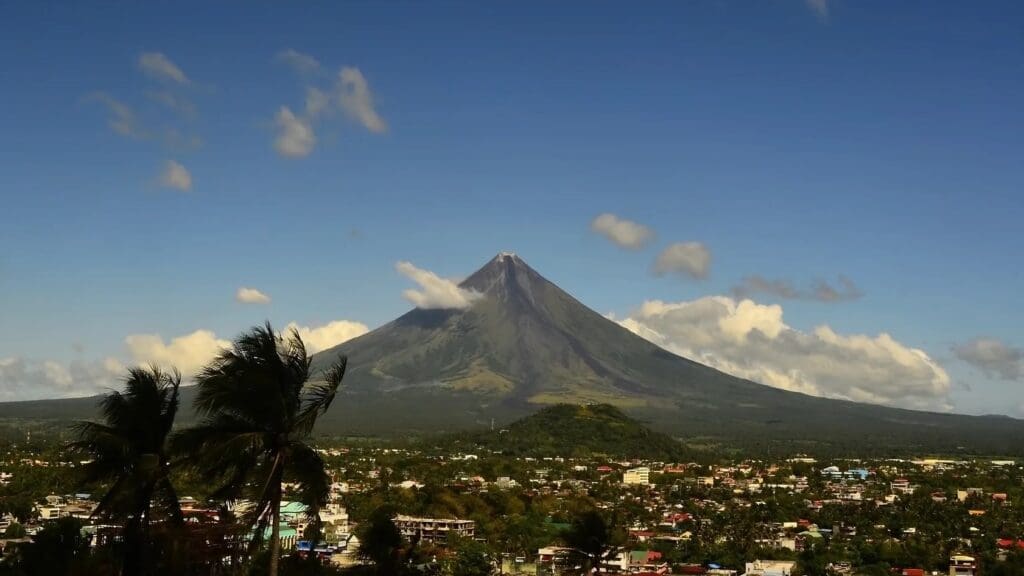
In the picturesque province of Albay lies the Mayon Volcano, renowned for its almost perfectly symmetrical cone shape. This majestic natural wonder is often hailed as the “perfect volcano” due to its unique and stunning geometric form. Towering at a height of over 2,400 meters, Mayon is not only a symbol of beauty but also a powerful reminder of nature’s might, being one of the most active volcanoes in the Philippines.
The volcano’s name, derived from the Bicolano word ‘Magayon,’ means beautiful—a fitting tribute to its awe-inspiring appearance. Mayon’s slopes are smooth and unblemished, covered with lush green vegetation that contrasts strikingly with the gray summit where the crater lies. The sight of Mayon, whether shrouded in mist or standing clear against a blue sky, never fails to captivate locals and tourists alike.
Apart from its breathtaking beauty, Mayon Volcano holds significant cultural importance. It features prominently in local folklore, particularly in the legend of Daragang Magayon, a tale of love and tragedy that adds to the mystique of the volcano. The communities surrounding Mayon have thrived for centuries, with agriculture being the primary way of life, aided by the fertile volcanic soil.
For adventure seekers, Mayon offers various activities like hiking, ATV tours, and bird watching. The challenging trek to its crater rewards hikers with panoramic views of the Albay region and the surrounding landscapes. However, given its active status, it is crucial for visitors to heed local advisories and safety guidelines.
Mayon Volcano’s flawless form and active nature make it a must-visit landmark in the Philippines. It stands as a testament to the country’s rich geological and cultural landscape, offering a unique and unforgettable experience to all who witness its splendor.
Taal Volcano and Lake, Batangas – A volcano within a lake
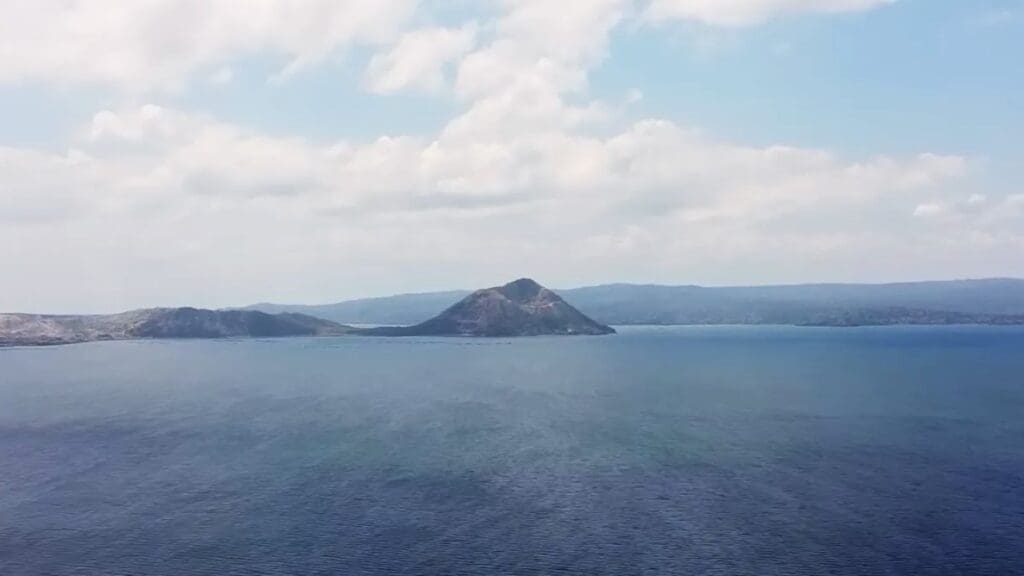
Nestled in the heart of Batangas lies the remarkable Taal Volcano and Lake, an extraordinary geological wonder where a volcano sits within a lake. This stunning natural formation is not just a scenic spectacle but also a unique geological phenomenon, captivating scientists and tourists alike with its rare configuration. Taal Volcano, one of the smallest active volcanoes in the world, rises from the calm waters of Taal Lake, itself situated within a larger caldera formed by previous volcanic activity.
Taal’s distinctive setting offers a breathtaking view, with the serene lake surrounding the volcano, creating a picturesque landscape that is both tranquil and imposing. The volcano, despite its relatively small size compared to other volcanoes in the Philippines, has a history of notable eruptions, reminding us of the ever-present power and unpredictability of nature.
Visitors to Taal can experience a variety of activities, from boat rides on the lake that offer a closer view of the volcano to trekking up the volcano itself for a panoramic vista of the surrounding area. The trek to the crater is relatively easy, making it accessible for most visitors, and the view from the top provides a stunning perspective of the crater lake within the volcano.
The area around Taal Lake is also rich in biodiversity, with a variety of flora and fauna thriving in this unique environment. The lake itself is home to a rich array of marine life and is a popular spot for fishing and water sports. The surrounding towns offer a glimpse into the local culture and history, with a variety of dining and accommodation options.
Taal Volcano and Lake symbolize the beauty and complexity of nature’s creations. Their unique formation not only provides a captivating sight but also serves as an important reminder of the dynamic nature of our planet. Whether you’re a nature lover, a photography enthusiast, or simply seeking a serene escape, Taal Volcano and Lake offer an experience that is both awe-inspiring and humbling.
Pagsanjan Falls, Laguna – A famous waterfall and a popular tourist attraction
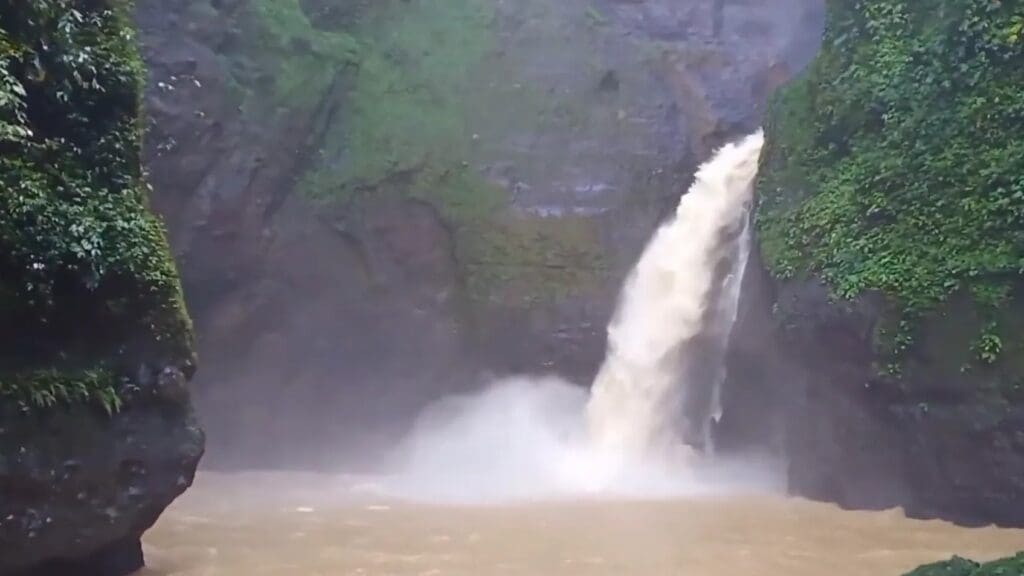
Pagsanjan Falls in Laguna is not just a magnificent waterfall; it’s an emblem of natural beauty and a thrilling adventure in the Philippines. Known locally as Magdapio Falls, it stands as one of the most famous and popular tourist attractions in the region, drawing visitors from around the globe to witness its spectacular cascade. The journey to Pagsanjan Falls is as memorable as the destination itself, involving an exhilarating boat ride through a verdant gorge lined with lush tropical greenery.
As the boat navigates the narrow and winding river, the sound of rushing water grows louder, building anticipation. The boatmen expertly maneuver past rocks and rapids, adding an element of excitement to the journey. Upon arrival, visitors are greeted by the awe-inspiring sight of the falls — water plunging down a deep gorge from a height of around 90 meters (295 feet) into a serene pool below.
The area around the waterfall offers a tranquil and picturesque setting, perfect for those seeking to connect with nature. Visitors can take a refreshing swim in the pool beneath the falls or rent a bamboo raft to get up close to the cascade for a truly immersive experience. The mist from the falls creates a cool and refreshing environment, providing a welcome respite from the tropical heat.
For the more adventurous, there’s the option to trek to a hidden cave behind the waterfall, where the sound of cascading water echoes off the walls, creating an almost mystical atmosphere. This trek, however, can be challenging and is recommended for those in good physical condition.
Pagsanjan Falls is not only a feast for the eyes but also a testament to the Philippines’ rich natural heritage. It’s a place where adventure meets tranquility, and the beauty of nature is on full display. Whether you’re an adventure seeker, a nature lover, or just looking for a picturesque escape, Pagsanjan Falls is a destination that promises an unforgettable experience.
Hundred Islands National Park, Pangasinan – Group of over 100 small islands
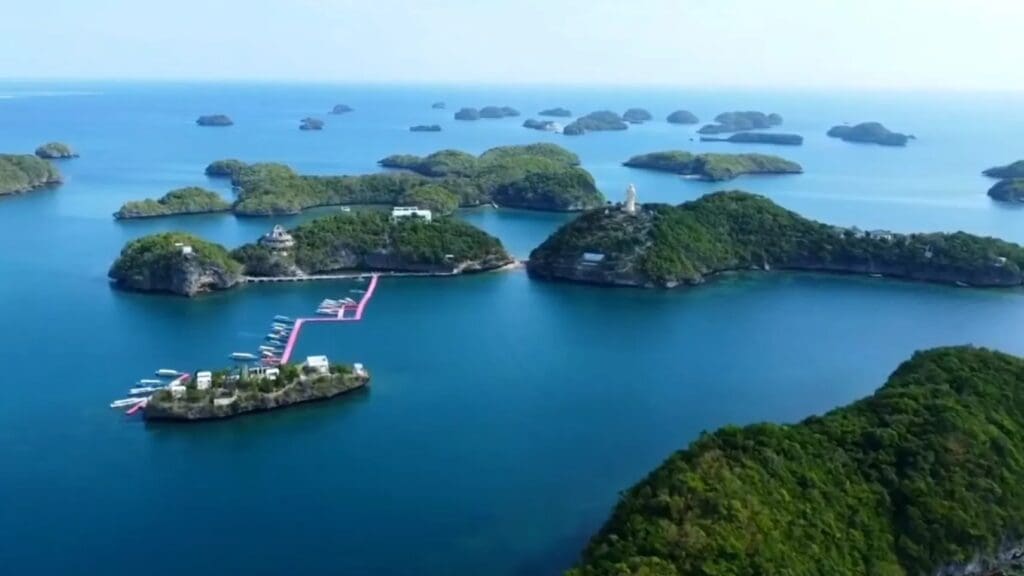
Located in the province of Pangasinan, the Hundred Islands National Park is an extraordinary natural wonder that captivates visitors with its stunning beauty. As the name suggests, this national park comprises over a hundred small islands, each offering unique landscapes and experiences. Spread over an area of 16.76 square kilometers in the Lingayen Gulf, this archipelago is one of the first national parks established in the Philippines, renowned for its ecological importance and breathtaking scenery.
Each of these islands, many of which are unnamed, is a marvel in itself, featuring pristine beaches, lush vegetation, and rich marine life. The islands vary in size and character – some are mere rocky outcrops jutting out of the sea, while others are larger with white sandy beaches and tropical forests. The clear blue waters surrounding the islands are teeming with vibrant coral reefs, making it an excellent spot for snorkeling and diving enthusiasts.
Visitors to the Hundred Islands National Park can indulge in a range of activities. Island hopping is a popular way to explore the diversity of the archipelago, allowing you to discover secluded beaches, explore hidden coves, and even find your own private island for a day. Kayaking, parasailing, and zip-lining offer more adventurous ways to experience the beauty of the islands, while simply lounging on the beach provides a peaceful retreat amidst nature.
Several of the islands have been developed for tourism, providing facilities such as cottages, picnic areas, and restrooms. Governor’s Island, one of the most visited, offers a panoramic view of the park from its viewing deck. Another notable island is Quezon Island, known for its recreational activities and amenities. For those seeking a more rugged experience, camping on one of the islands under the stars is an unforgettable adventure.
The Hundred Islands National Park is more than just a tourist destination; it’s a sanctuary that showcases the Philippines’ commitment to preserving its natural beauty. Its rich biodiversity, both above and below the water, is a testament to the ecological significance of this unique archipelago. Whether you’re seeking adventure, relaxation, or simply a breathtaking view, the Hundred Islands National Park is a must-visit destination that promises a memorable encounter with nature’s wonders.
Rizal Park, Manila – Historical park dedicated to the national hero Jose Rizal
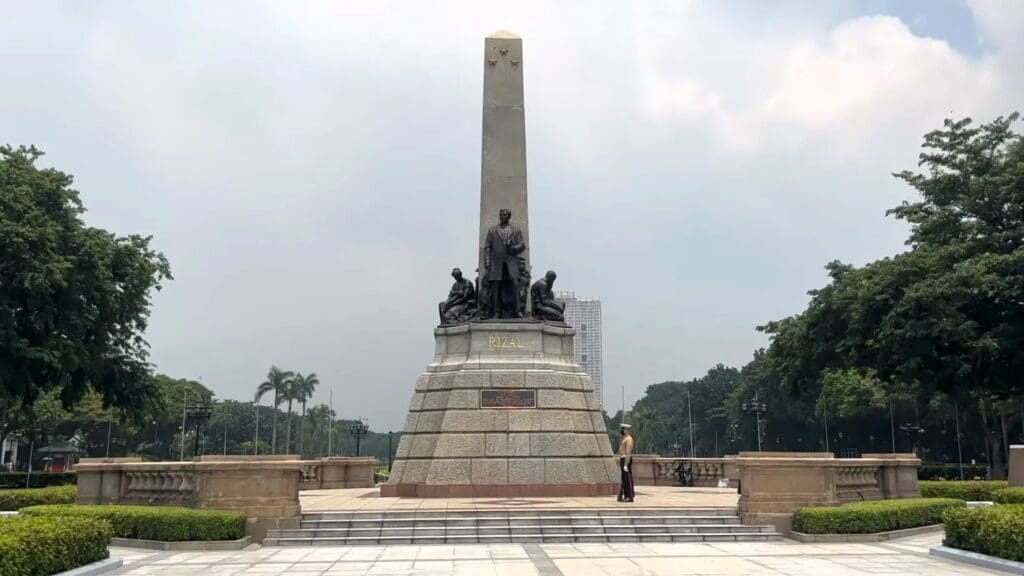
Rizal Park, located in the heart of Manila, stands as a historic landmark and a tribute to the Philippines’ revered national hero, Dr. Jose Rizal. This expansive park, spanning around 58 hectares, is a symbol of national pride and a reminder of the nation’s struggle for independence. It’s named after Rizal, whose writings inspired the movement against Spanish colonial rule and who was executed at this very site in 1896.
The park is a focal point for both locals and tourists, offering a serene escape amidst the bustling city. Its well-manicured gardens, open lawns, ornamental plants, and paved walks provide a peaceful atmosphere. The central feature of Rizal Park is the Rizal Monument, a towering bronze sculpture of the national hero. The monument, guarded by ceremonial sentries, holds Rizal’s remains and is a constant reminder of his sacrifice for the country’s freedom.
Apart from the Rizal Monument, the park is dotted with several other attractions. The Independence Flagpole, standing as the country’s Kilometer Zero, marks the starting point of the Philippines’ measurement of distances. The park also includes a replica of Rizal’s ancestral house, a museum dedicated to his life and works, and the Martyrdom of Dr. Jose Rizal light-and-sound show, which narrates his final moments.
Rizal Park is not just a historical site but also a cultural hub. It hosts various events, concerts, and public gatherings throughout the year. The park’s open-air auditorium, the Central Lagoon with its musical dancing fountain, and the Chinese and Japanese Gardens offer leisure and entertainment for visitors of all ages.
This park is a living museum of Filipino history, culture, and heritage. It provides an insightful glimpse into the life of Jose Rizal and the pivotal role he played in the nation’s history. A visit to Rizal Park is more than just a walk in a park; it’s an immersive experience in Philippine patriotism, art, and nature, making it a must-visit destination in Manila.
Fort Santiago, Manila – A citadel first built by Spanish conquistador, Miguel López de Legazpi
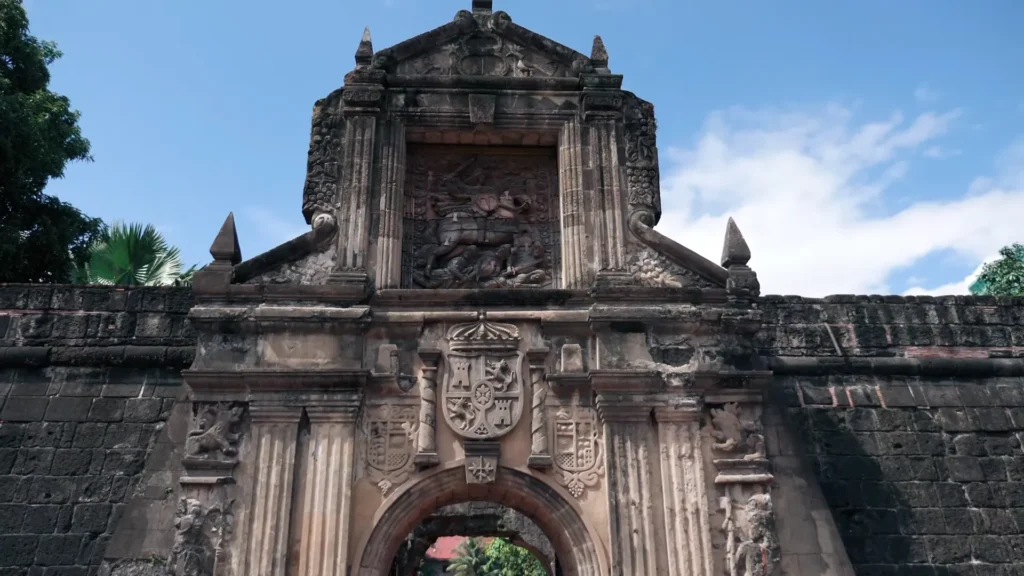
Nestled in the historic district of Intramuros in Manila, Fort Santiago stands as a testament to the Philippines’ rich and tumultuous history. First built by the Spanish conquistador, Miguel López de Legazpi, this citadel has been a silent witness to the many chapters of Philippine history, from Spanish colonization to World War II. Its strategic location near the mouth of the Pasig River made it an essential defensive fortress for the Spanish rulers.
Fort Santiago is renowned for its remarkable architecture, featuring well-preserved gates, walls, and dungeons. The iconic main gate, adorned with the Spanish coat of arms, opens to a site that has endured centuries of conflict and revolution. The fortress, with its thick, high walls and expansive grounds, has served various roles throughout its existence, from being a military garrison, a prison, and a storage facility to becoming a revered historical park.
One of the most significant aspects of Fort Santiago is its association with Dr. Jose Rizal, the Philippines’ national hero. It was here that Rizal was imprisoned before his execution in 1896. His final footsteps from his cell to the execution site are immortalized in bronze footprints, leading visitors on a poignant path through the compound.
Inside Fort Santiago, visitors can explore the Rizal Shrine, dedicated to the life and works of Jose Rizal. The shrine houses various memorabilia, including manuscripts, books, and personal belongings that offer a deeper insight into the life of this influential figure in Philippine history.
The fortress is not only a place of historical significance but also a cultural venue. Its picturesque gardens, plazas, and open spaces host a variety of cultural events, theatrical performances, and art exhibits. The scenic views of the Pasig River and the lush greenery provide a peaceful retreat in the midst of the bustling city.
Fort Santiago’s enduring strength and historical importance make it a symbol of Filipino resilience and patriotism. A visit to this landmark is a journey back in time, offering a profound understanding of the Philippines’ struggle for independence and the enduring spirit of its people. It’s a must-visit destination for anyone interested in Philippine history and architecture.
San Agustin Church, Manila – The oldest stone church in the Philippines
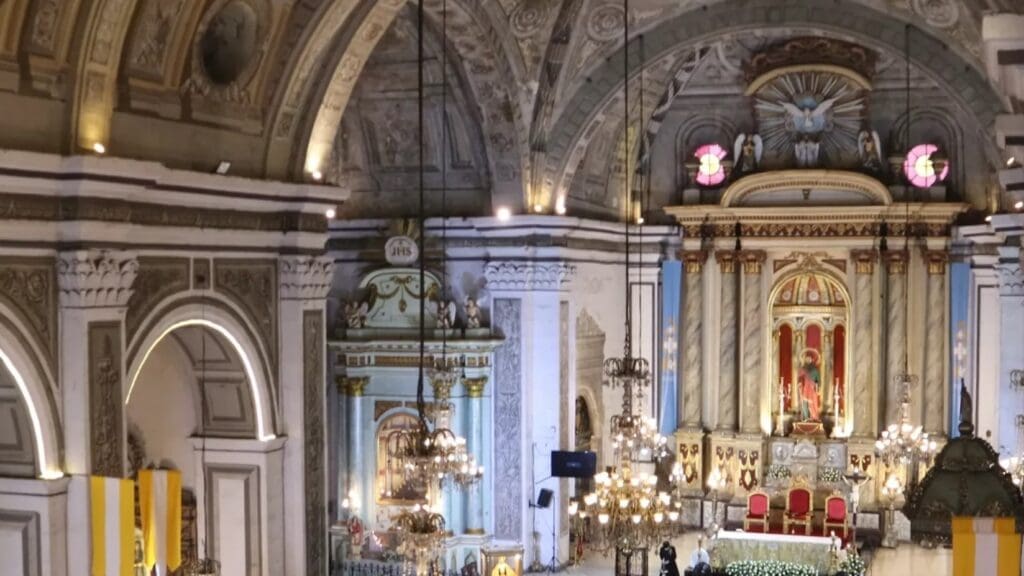
San Agustin Church, nestled in the heart of historic Intramuros in Manila, stands as the oldest stone church in the Philippines. This architectural marvel, completed in 1607, has withstood the test of time and numerous natural disasters, symbolizing the enduring strength and resilience of Filipino faith. Its imposing structure is a beautiful example of Spanish Baroque architecture, reflecting the Philippines’ rich colonial history.
As you step inside San Agustin Church, you are immediately transported into an era of grandeur and devotion. The church’s interior is adorned with intricate frescoes, ornate chandeliers, and beautifully carved wooden doors, offering a glimpse into the opulent artistic styles of the Spanish colonial period. The expansive nave, lined with stunning columns and arches, leads to a magnificent altar, a focal point of spiritual reverence and artistic beauty.
One of the most striking features of San Agustin Church is its museum, which houses a vast collection of religious artifacts, ecclesiastical art, and historical relics. The museum provides a comprehensive narrative of the church’s history and the role it has played in the religious life of Filipinos for centuries. It also includes a collection of vestments, statues, and paintings, highlighting the artistic heritage of the Philippine Catholic Church.
The church is not only a place of worship but also a popular venue for cultural events and celebrations, particularly weddings. Its timeless beauty and sacred ambiance make it a sought-after location for couples looking to exchange vows in a historic and spiritually significant setting.
Beyond its religious significance, San Agustin Church is a testament to the Philippines’ rich cultural tapestry. It has been designated as a UNESCO World Heritage Site, recognized for its architectural significance and contribution to the cultural landscape of Manila.
Visiting San Agustin Church is an experience that transcends religious boundaries, offering visitors an opportunity to appreciate the beauty of Filipino heritage and the enduring legacy of faith in the Philippines. Whether you are a history enthusiast, an art lover, or a spiritual seeker, San Agustin Church is a landmark that should not be missed.
Vigan, Ilocos Sur – Well-preserved Spanish colonial town
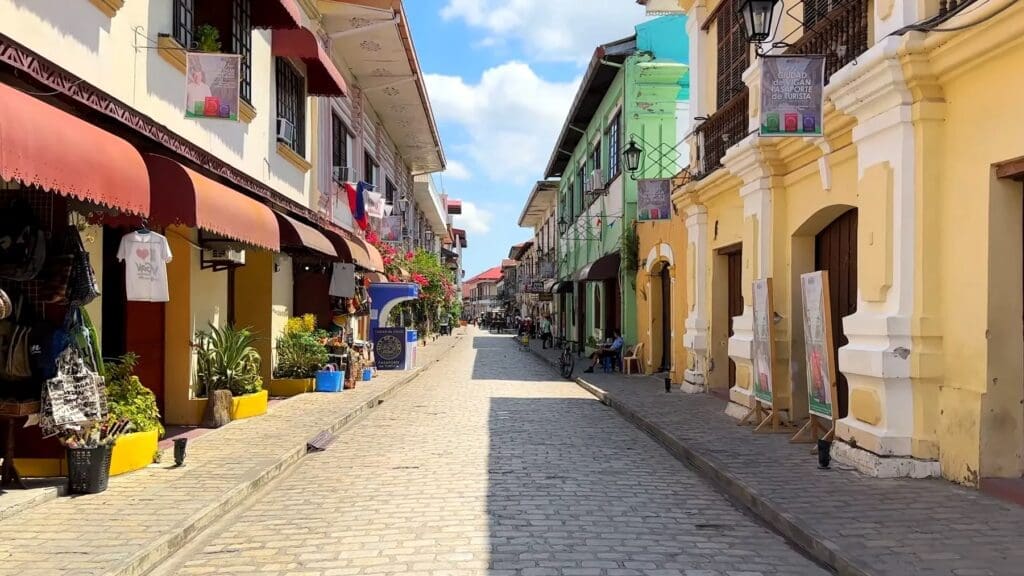
Vigan, located in the province of Ilocos Sur, stands as a magnificent testament to the Philippines’ rich colonial history. Recognized as a UNESCO World Heritage Site, this well-preserved Spanish colonial town offers a unique glimpse into the country’s vibrant past. Strolling through the cobblestone streets of Vigan is like stepping back in time, with its beautifully preserved ancestral houses, antique shops, and horse-drawn carriages.
The town’s most famous street, Calle Crisologo, encapsulates the essence of old-world charm. Lined with centuries-old houses, quaint boutiques, and charming cafés, Calle Crisologo is the heart and soul of Vigan. These ancestral homes, characterized by their distinctive Spanish and Filipino architectural designs, showcase the fusion of cultural influences that define much of the Philippines’ history.
Vigan is not only about its stunning architecture; it’s also a cultural melting pot. The town’s public market is a bustling center of activity where locals and tourists alike can savor the flavors of authentic Ilocano cuisine. From the famous Vigan empanada to the delectable longganisa, the culinary offerings in Vigan are as rich and diverse as its history.
Apart from its historical and gastronomical appeal, Vigan hosts vibrant festivals that reflect the town’s rich cultural heritage. The Viva Vigan Binatbatan Festival of the Arts, for example, is an annual celebration featuring street dancing, traditional games, and parades, showcasing the town’s artistic and cultural legacy.
Visiting Vigan offers an immersive experience that goes beyond mere sightseeing. It’s an opportunity to understand and appreciate the intricate tapestry of Filipino history and culture. The town’s preservation efforts have not only saved its physical structures but also kept alive the stories and traditions that have shaped the Filipino identity.
In Vigan, every corner tells a story, and every street echoes the footsteps of history. It is a living museum, a testament to the resilience and beauty of Filipino heritage. For those seeking a journey into historical places of the Philippines, Vigan is a destination that promises an unforgettable experience.
Mt. Pulag, Benguet – The third highest mountain in the Philippines
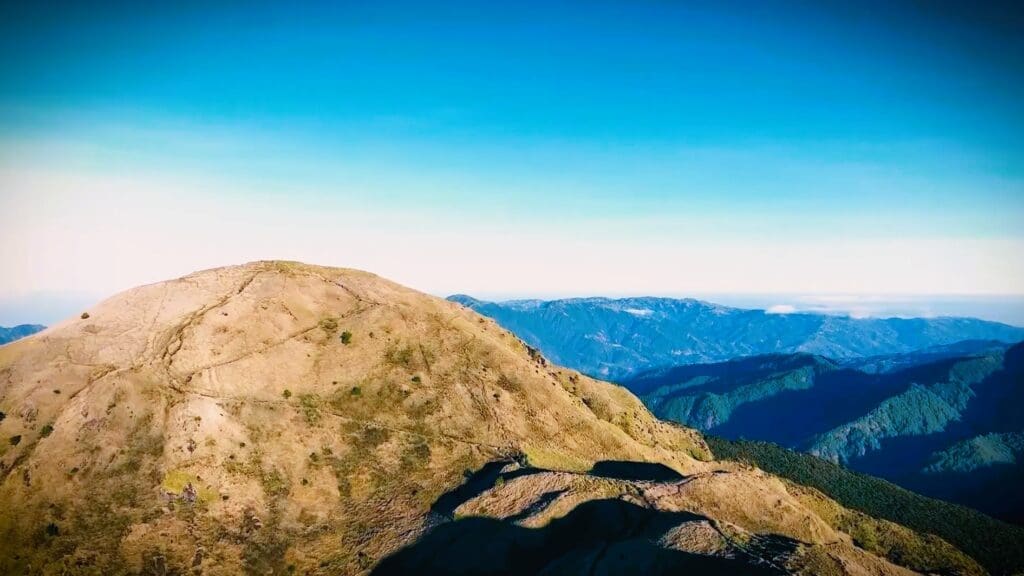
Mt. Pulag, standing majestically in the province of Benguet, is the third highest mountain in the Philippines and a dream destination for hikers and nature enthusiasts. Known for its stunning sea of clouds and diverse ecosystems, it provides an otherworldly experience that captivates the hearts of all who ascend its peaks. Reaching a towering height of 2,926 meters above sea level, Mt. Pulag is part of the Cordillera mountain range and holds a special place in the culture and traditions of the indigenous people in the region.
The trek to the summit of Mt. Pulag is as breathtaking as it is challenging. The mountain features several trails of varying difficulty, catering to both seasoned hikers and those seeking a less strenuous journey. The most popular among these is the Ambangeg Trail, known for its relatively gentle slopes and magnificent scenic views, making it accessible even to beginners.
As hikers traverse the different vegetation zones, from pine forests to mossy woods, they encounter a rich biodiversity that includes rare and endemic species of flora and fauna. The mountain’s unique landscape is a haven for birdwatchers and nature lovers, offering glimpses of exotic birds and plants that are native to the area.
The most magical moment on Mt. Pulag, however, is witnessing the sunrise from the summit. As the sun peeks over the horizon, it illuminates the vast sea of clouds below, creating a surreal and mesmerizing spectacle. This natural phenomenon is not only a photographer’s dream but also a deeply spiritual experience, often described as ethereal and life-changing.
Beyond its natural beauty, Mt. Pulag holds cultural significance for the indigenous communities living in the area. It is considered a sacred place, often referred to as the “playground of the gods.” The local tribes hold traditional beliefs and practices that are closely tied to the mountain, adding a rich cultural dimension to the Mt. Pulag experience.
Whether seeking adventure, a connection with nature, or spiritual enrichment, Mt. Pulag offers a unique and unforgettable journey. It stands not just as a geographical landmark but as a symbol of the awe-inspiring beauty of the Philippine landscape and the rich cultural tapestry of its people.
Baguio Cathedral, Baguio City – A historic cathedral with a rose-colored exterior
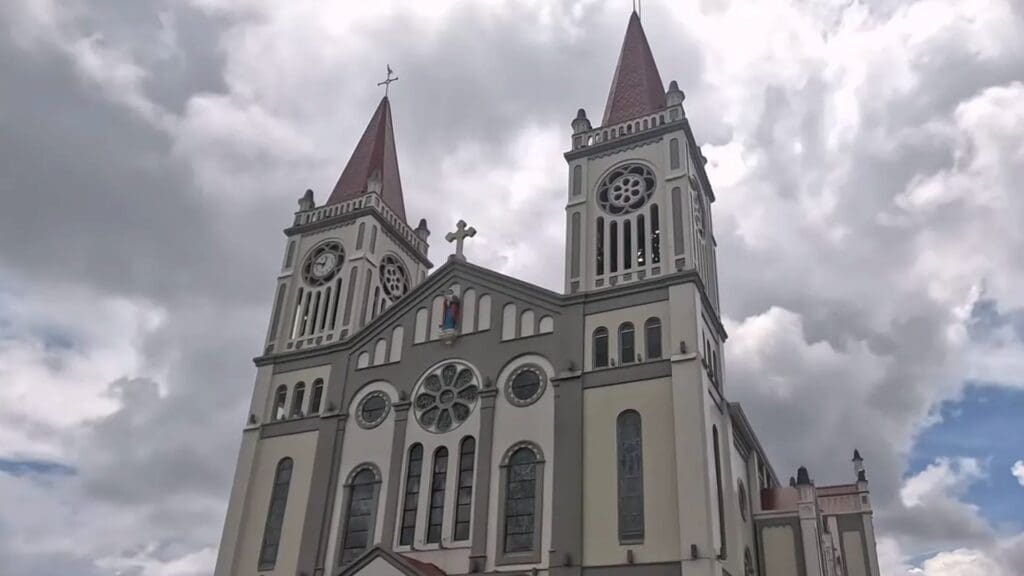
In the heart of Baguio City, perched atop a hill with a commanding view of the surrounding urban landscape, stands the Baguio Cathedral. Officially known as the Our Lady of Atonement Cathedral, this historical church is distinguished by its striking rose-colored exterior and twin spires, making it a prominent and beloved landmark in the Summer Capital of the Philippines.
Constructed over several years and completed in 1936, the cathedral is a testament to architectural beauty and resilience. It survived the devastation of World War II and has since become a symbol of hope and faith for the local community and visitors alike. The Gothic-inspired architecture of the cathedral, combined with its beautiful stained-glass windows and intricate interior design, creates an atmosphere of reverence and tranquility.
As visitors ascend the grand staircase of over a hundred steps leading to the cathedral’s entrance, they are greeted by a breathtaking view of Baguio’s unique blend of natural beauty and urban charm. Inside, the cathedral’s spacious nave, adorned with religious artworks and symbols, invites worshippers and tourists to pause and reflect.
The Baguio Cathedral is not only a place of worship but also a hub of cultural and historical significance. It plays a pivotal role in the city’s major religious events, including Holy Week observances and the annual Panagbenga Flower Festival. The cathedral’s location in the city center makes it a starting point for exploring Baguio’s other attractions, such as Burnham Park and Session Road.
In addition to its religious and cultural roles, the Baguio Cathedral serves as a beacon of comfort and solace, particularly in times of crisis or celebration. Its welcoming doors and serene ambiance offer a haven for contemplation and prayer amidst the bustling city life.
Visiting the Baguio Cathedral is more than just a touristic experience; it is an opportunity to connect with the rich spiritual heritage of Baguio City and witness a landmark that embodies the strength, beauty, and spirit of its people.
Subic Bay, Zambales – A bay on the west coast of Luzon, former U.S. naval base
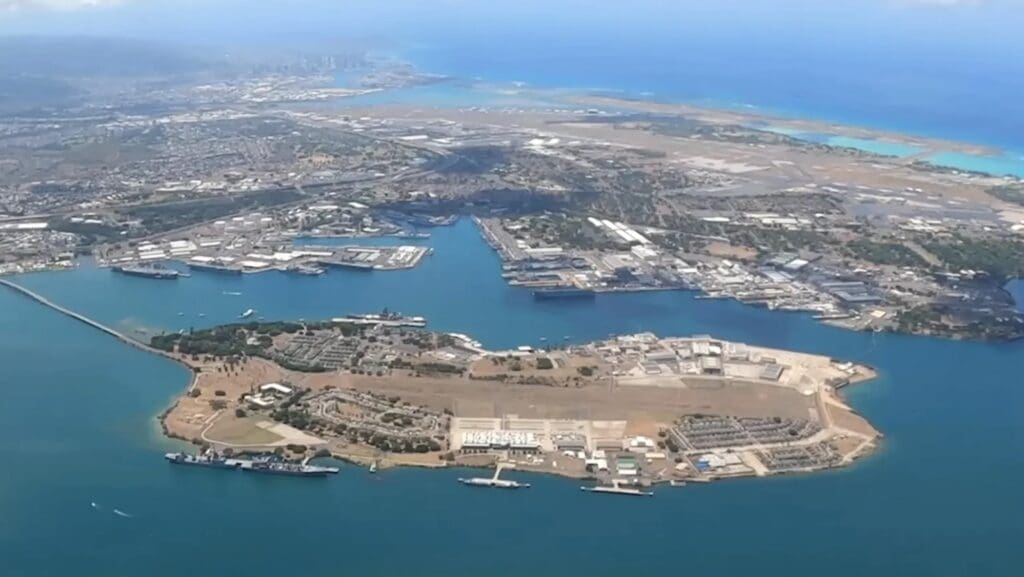
Subic Bay, nestled on the west coast of Luzon in Zambales, holds a unique place in both Philippine and international history. Once a major U.S. naval base, this deepwater bay has transformed into a bustling hub of commerce, tourism, and cultural exchange. The bay’s strategic location and deep waters made it an ideal naval facility, playing a crucial role during World War II and the Vietnam War.
Today, Subic Bay stands as a symbol of resilience and adaptability. After the departure of the U.S. Navy in 1992, the area was redeveloped into the Subic Bay Freeport Zone, a dynamic economic and leisure zone. This transformation is a testament to the innovative spirit of the Philippines, turning a military base into a thriving center for business, leisure, and maritime activities.
The bay’s picturesque surroundings, with its azure waters and lush green hills, make it a popular destination for tourists and locals alike. Visitors can enjoy a variety of water-based activities such as diving, sailing, and jet-skiing, exploring the rich marine life and historic shipwrecks that lie beneath the bay’s surface.
Subic Bay is also a gateway to the natural beauty of Zambales, including its famous beaches and mountain trails. The area’s rich biodiversity is showcased in attractions like the Zoobic Safari and Ocean Adventure, where guests can interact with a variety of marine and terrestrial wildlife.
The historical significance of Subic Bay is preserved in landmarks such as the Subic Bay Historical Museum, which chronicles the bay’s transformation from a naval base to a freeport zone. The museum offers insight into the bay’s strategic importance and the life of servicemen stationed there.
Subic Bay’s mix of historical legacy, natural beauty, and modern development represents the multifaceted charm of the Philippines. Whether it’s for business, leisure, or historical exploration, Subic Bay offers a distinctive experience that mirrors the country’s rich heritage and forward-looking vision.
Corregidor Island, Bataan – An island fortress and significant WWII site
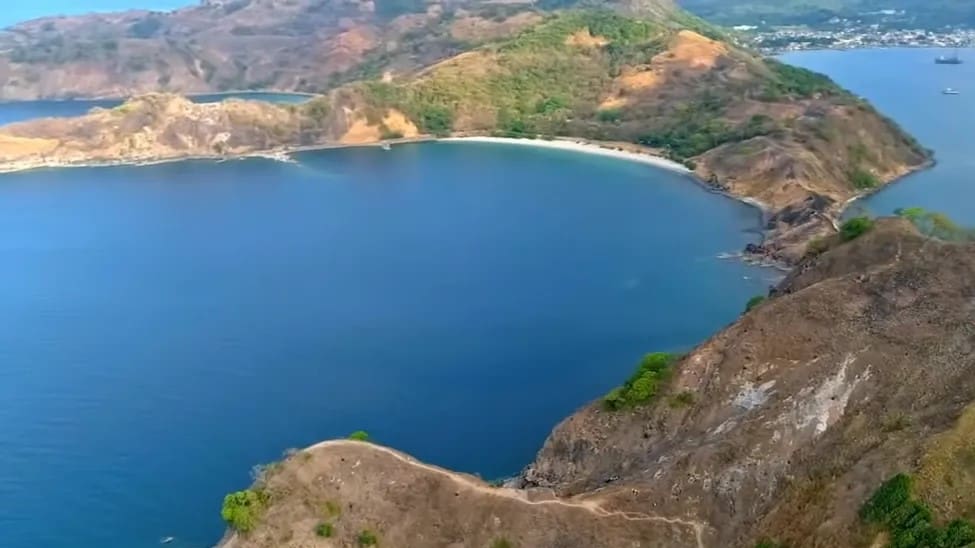
Corregidor Island in Bataan stands as a poignant symbol of courage and resilience in the face of adversity. This small rocky island, strategically located at the entrance of Manila Bay, played a pivotal role during World War II as a fortress guarding against enemy attacks. Its heavy bombardment during the war has left indelible marks, making it a significant site for remembrance and reflection.
As I stepped onto the island, the remnants of the past were evident in its landscape — from battered gun emplacements and ruined barracks to the solemn memorials that honor the brave souls who fought and fell here. The Malinta Tunnel, a key feature of the island, offers a haunting journey through its labyrinthine underground network used as a headquarters, hospital, and sanctuary during the war.
Visiting Corregidor is like walking through a live history book. Each ruin and memorial tells a story of the island’s strategic military importance and the fierce battles that raged here. The Pacific War Memorial, with its iconic dome and eternal flame, serves as a stark reminder of the cost of war and the valor of those who served.
Corregidor isn’t just about its war-torn past. The island is also a place of natural beauty, offering panoramic views of the surrounding sea and sky. A tour around the island reveals lush greenery and an abundance of wildlife, providing a tranquil contrast to its historical significance.
A trip to Corregidor Island is more than just a sightseeing excursion; it’s an emotional experience that connects visitors with a critical chapter in world history. The resilience of Corregidor and its symbolic significance in the Philippines’ wartime narrative make it a must-visit landmark for those looking to understand the depths of human courage and the sacrifices made for freedom.
Mt. Pinatubo, Zambales – A volcano known for its catastrophic eruption in 1991
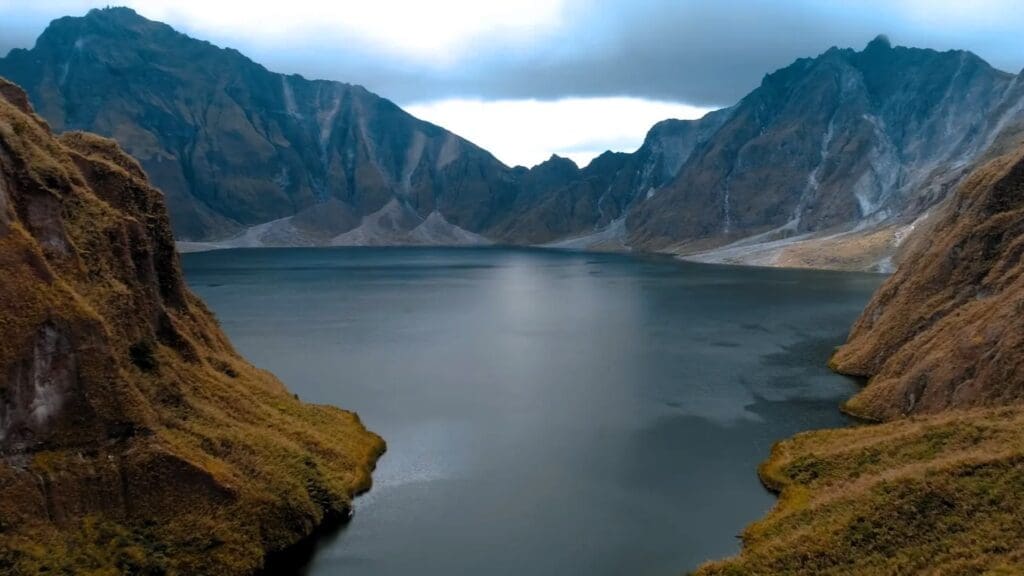
Mt. Pinatubo in Zambales is a striking testament to nature’s unpredictable power and its ability to reshape landscapes. Known globally for its catastrophic eruption in 1991, one of the 20th century’s largest volcanic events, Mt. Pinatubo has since transformed into a site of awe-inspiring beauty and geological interest.
As I approached this once-dormant volcano, I was struck by the stark contrasts in its landscape — the rugged terrain formed by lahar flows and the serene beauty of the crater lake that formed in the aftermath of the eruption. The turquoise waters of the lake, set against the grayish hues of the volcanic ash, create a surreal and captivating scene, a reminder of nature’s capacity for both destruction and incredible creation.
Trekking to the crater lake is a journey through a landscape that tells a story of rebirth and resilience. The trails, once buried under ash and debris, now offer hikers a unique opportunity to witness firsthand the transformative power of nature. The surrounding area, which bore the brunt of the eruption’s devastation, is now a thriving ecosystem, showcasing nature’s remarkable ability to heal and renew itself.
The eruption of Mt. Pinatubo had far-reaching effects, altering global climate patterns and providing valuable lessons in disaster preparedness and volcanic monitoring. Today, the volcano serves as a living laboratory for scientists and a compelling destination for eco-tourists.
Visiting Mt. Pinatubo is not just an adventure; it’s an immersive experience into the heart of one of nature’s most powerful forces. The volcano’s history, the dramatic changes it has undergone, and the breathtaking beauty of its crater lake make it a must-visit landmark for those who appreciate the awe-inspiring wonders of the natural world.
Sagada Hanging Coffins, Mountain Province – Traditional coffins hung on cliffs
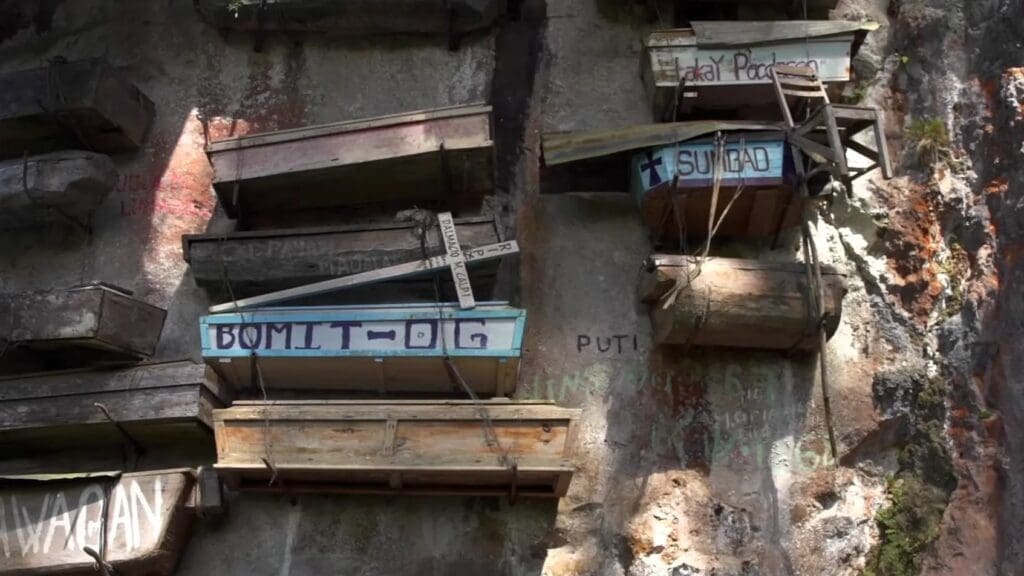
In the serene mountains of the Northern Philippines lies the town of Sagada, home to a unique and ancient funeral tradition – the Hanging Coffins. This remarkable practice, set against the backdrop of lush green cliffs and deep valleys, offers a glimpse into the rich cultural tapestry of the indigenous people in the Mountain Province.
As I walked through the tranquil landscape of Sagada, I was captivated by the sight of these traditional coffins, suspended high on limestone cliffs. This centuries-old practice, a way for the local Igorot people to honor their dead, involves placing the coffins in elevated positions as a means to bring the deceased closer to the heavens. It’s a poignant reminder of the community’s deep respect for their ancestors and their spiritual beliefs.
Each coffin, carved by the elderly before they pass, tells a story of a life lived and a tradition proudly preserved. The location of the coffins, often reachable only by narrow and winding paths, adds to the sense of mystery and reverence surrounding this ancient practice. The coffins, some of which are over a century old, vary in size and design, reflecting the personal stories and statuses of those within.
The Hanging Coffins of Sagada are not just a tourist attraction; they are a symbol of the enduring customs of the Igorot people. This practice, although less common today, continues to be a significant part of the community’s identity and a testament to their strong connection to their ancestors and the natural world.
Visiting the Hanging Coffins is a humbling and enlightening experience. It offers a unique perspective on the diverse cultural practices in the Philippines and the profound ways in which communities honor their dead. The beauty of the surrounding landscape, coupled with the solemnity of the coffins, creates a deeply moving experience that stays with visitors long after they leave.
Philippine Military Academy, Baguio City – The premier military academy in the Philippines
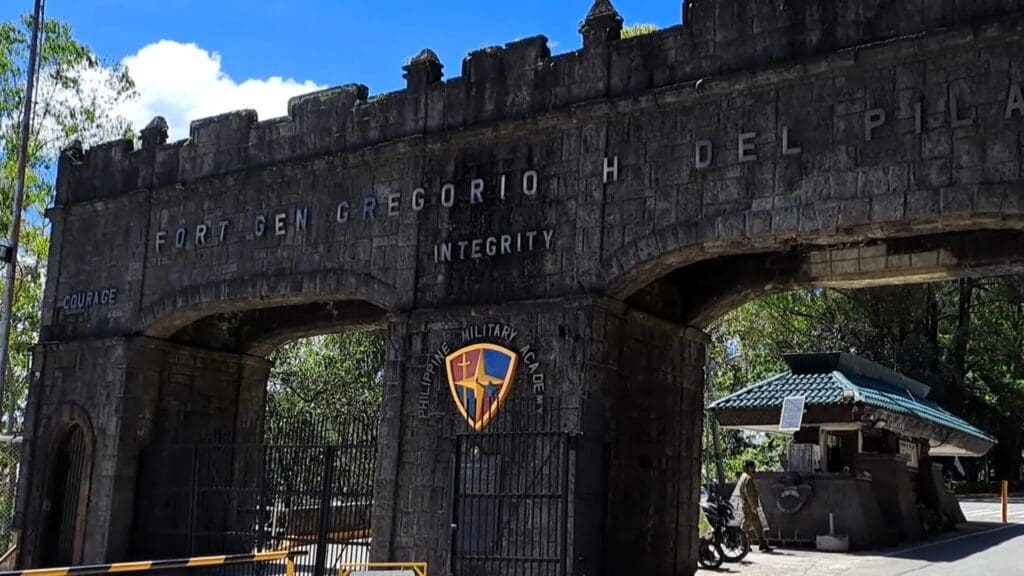
In the cool, pine-clad city of Baguio, the Philippine Military Academy stands as a symbol of discipline, honor, and service. As the premier military academy in the Philippines, it molds the country’s future military leaders, instilling values of courage and commitment. The sprawling campus, set against the backdrop of lush mountains, exudes an air of solemnity and pride that resonates with every cadet who walks its grounds.
Visiting the academy, I was struck by the meticulous precision and order that defines every aspect of life here. From the precisely arranged barracks to the cadets moving in unison during drills, everything reflects the rigorous training and discipline essential to military life. The academy is not just an educational institution; it’s a testament to the dedication and sacrifice of those who choose to serve their country.
The Philippine Military Academy’s history dates back to the early 20th century, evolving from a simple officers’ training school to a prestigious institution that has produced many of the nation’s military leaders. Its museum showcases this rich history, filled with artifacts and mementos that tell the story of the academy and its graduates’ contributions to the nation’s defense.
Walking through the academy, one can’t help but feel a sense of respect for the cadets who undergo rigorous training to become the nation’s defenders. The academy’s ethos is not just about military prowess but also about developing character, leadership, and a deep sense of patriotism.
For visitors, the Philippine Military Academy offers a glimpse into the disciplined life of a military cadet and the profound responsibility they carry. The parade grounds, the museum, and the manicured landscapes are open to the public, providing an opportunity to appreciate the academy’s role in shaping the nation’s future military leaders.
A visit to the Philippine Military Academy is both enlightening and inspiring, offering a unique perspective on the values of discipline, honor, and service that define the military profession. It stands as a proud emblem of the nation’s commitment to peace and security.
Malacañang Palace, Manila – The official residence of the President of the Philippines

Nestled along the banks of the Pasig River, Malacañang Palace in Manila stands as a grand symbol of political power and historical legacy. Serving as the official residence of the President of the Philippines, the palace is more than just a home; it’s a national landmark steeped in the country’s political history. With its elegant Spanish colonial architecture and beautifully landscaped gardens, Malacañang is a testament to the Philippines’ rich and complex past.
As I walked through the palace’s corridors and stately rooms, I was struck by the weight of history that each wall, each artifact, holds. The palace has been the epicenter of Philippine political life for centuries, witnessing significant events from the Spanish colonial period to the present day. The grandeur of its halls and the solemnity of its offices are a constant reminder of the responsibilities and challenges faced by the nation’s leaders.
One of the most intriguing aspects of Malacañang Palace is its evolution through different historical eras. Originally built as a summer house for a Spanish aristocrat in the 18th century, it has since been transformed, expanded, and refurbished, mirroring the changes in the country’s leadership and political landscape. Each room in the palace tells a different story, from the opulent Ceremonial Hall to the intimate Music Room.
Visitors to Malacañang are often fascinated by the Presidential Museum and Library, which offers a comprehensive look at the history of the Philippine presidency. The museum houses a rich collection of state gifts, historical documents, and personal memorabilia of the country’s presidents, providing a unique insight into their lives and times.
Strolling through the lush gardens of Malacañang, one can’t help but feel a sense of awe at the beauty and tranquility that contrasts sharply with the bustling city outside its gates. The gardens, with their manicured lawns and tropical plants, offer a peaceful retreat and a space for reflection.
Malacañang Palace is more than just the residence of the head of state; it’s a living museum, a center of power, and a symbol of the Filipino people’s aspirations and struggles. A visit to Malacañang is an unforgettable experience, offering a deeper understanding of the Philippines’ political heritage and its journey as a nation.
The Mansion, Baguio City – The official summer residence of the President of the Philippines

Nestled amidst the cool, pine-clad hills of Baguio City, The Mansion stands as an elegant symbol of Philippine presidential history and tradition. As the official summer residence of the President of the Philippines, this stately building offers a glimpse into the leisurely side of the country’s highest office. With its well-manicured lawns, grandiose architecture, and serene ambiance, The Mansion is a distinguished landmark in the “Summer Capital of the Philippines.”
The Mansion’s imposing gate and beautiful façade immediately catch the eye, reflecting a blend of Spanish colonial and American architectural styles. As I approached the entrance, I was struck by the sense of grandeur and history that the structure exuded. Originally built in 1908 for U.S. colonial officials, The Mansion has since undergone various renovations, each contributing to its current majestic appearance.
Walking around The Mansion’s expansive grounds, I was enveloped in an atmosphere of tranquility and elegance. The well-kept gardens, with their array of flowers and trees, provide a refreshing respite from the bustling city life. The serene environment is perfect for a leisurely walk or a moment of quiet contemplation, offering a peaceful escape amidst the cool Baguio climate.
Inside, The Mansion is equally impressive, with its tastefully decorated interiors and historical artifacts. While access to the interior is limited, glimpses into the reception hall showcase the intricate design and refined decor that befit a presidential residence. The furnishings and artworks inside speak volumes of the country’s rich cultural heritage and the dignity of the office it represents.
One of the highlights of visiting The Mansion is the opportunity to learn about its historical significance. Over the years, it has served as a venue for important government functions and meetings, hosting various dignitaries and playing a pivotal role in the country’s political landscape. The Mansion not only serves as a retreat for the president but also as a symbol of the Philippine government’s presence in the northern part of the country.
A visit to The Mansion is a must for anyone traveling to Baguio City. It offers a unique blend of history, architecture, and natural beauty, making it a standout landmark in the region. The elegance and historical significance of The Mansion, coupled with the charm of Baguio City, make it a truly remarkable destination, reflecting a notable aspect of the Philippines’ presidential heritage.
Visayas Region Landmarks in the Philippines
The Visayas region, nestled in the heart of the Philippine archipelago, is a vibrant mosaic of cultural, historical, and natural landmarks. It’s a region that pulsates with life and color, offering a unique blend of experiences. From the geological wonder of the Chocolate Hills in Bohol, an extraordinary landscape of over 1,000 symmetrical mounds, to the architectural splendor of the San Agustin Church in Iloilo, a testament to the Philippines’ colonial past. The region is also famous for the Sinulog Festival in Cebu City, a spectacular cultural extravaganza that captures the essence of Filipino spirituality and creativity. Visayas is home to historic sites like Fort San Pedro and Magellan’s Cross in Cebu City, landmarks that echo the tales of exploration and conquest. This region is a celebration of the Filipino spirit, offering a rich tapestry of experiences that blend the past with the present, making it an essential and enthralling part of any exploration of the Philippines’ most famous landmarks.
Chocolate Hills, Bohol – Over 1,268 cone-shaped hills spread over an area of 50 square kilometers
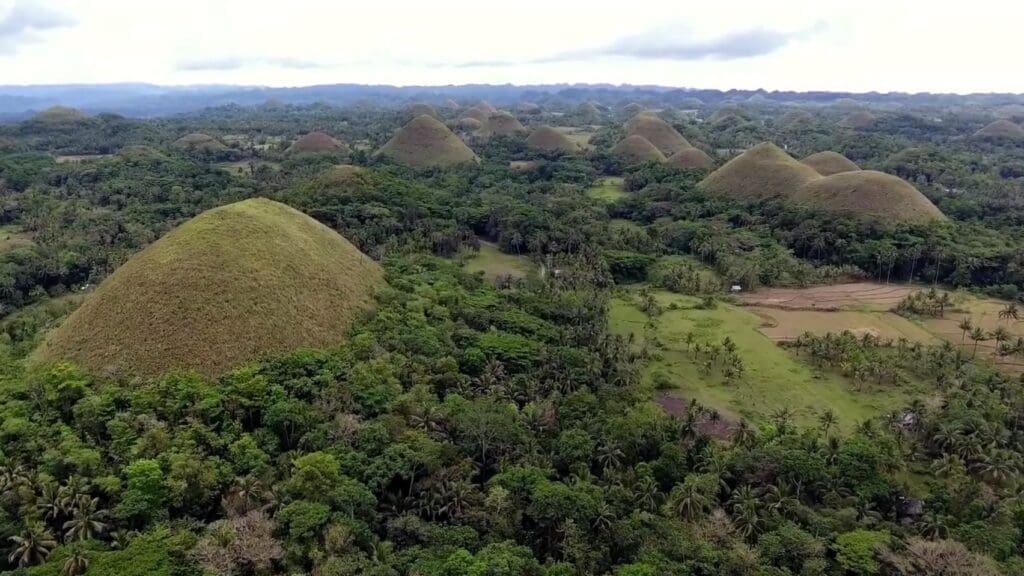
Bohol’s Chocolate Hills are a mesmerizing natural wonder, unique in their vastness and uniform shape. As I gazed upon this extraordinary landscape, with over 1,268 cone-shaped hills spread across 50 square kilometers, I was struck by their almost symmetrical formation and the way they dominate the horizon.
During the dry season, these grass-covered hills turn a rich chocolate brown, giving them their famous name. The sight of these hills, varying in height but uniformly shaped, creates a breathtaking and almost surreal panorama that stretches as far as the eye can see. It’s a remarkable testament to the natural beauty and diversity of the Philippine landscape.
The origin of the Chocolate Hills is a subject of scientific curiosity and local folklore. Geologists believe they are the result of thousands of years of erosion of limestone, while local myths offer more colorful explanations, involving giants and their discarded boulders. Whatever their origin, the Chocolate Hills are a must-see for any visitor to the Philippines, offering a unique and unforgettable spectacle.
The viewing decks in the area, such as the one at the Chocolate Hills Complex, offer the perfect vantage point to appreciate this incredible sight. For the more adventurous, a hike up to the hills provides a closer look and the opportunity to experience this natural wonder amidst the peaceful and scenic landscape of Bohol.
The Chocolate Hills are not just a tourist attraction but a symbol of Bohol’s natural heritage. Their striking appearance and the mystery surrounding their formation make them one of the most iconic and photographed landscapes in the Philippines. This geological marvel is a true testament to the awe-inspiring beauty of our natural world.
Magellan’s Cross, Cebu – A cross planted by Portuguese and Spanish explorers
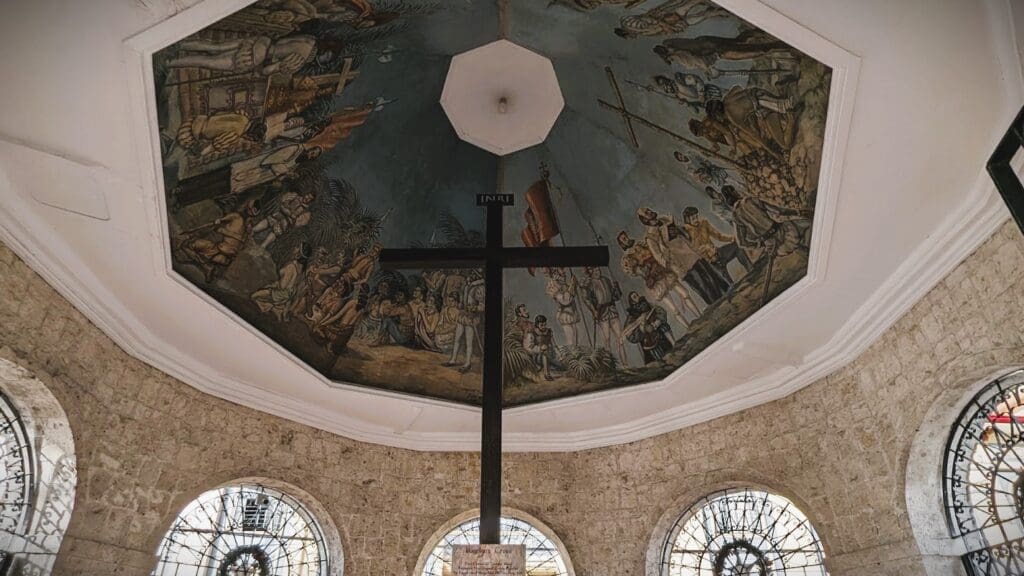
In the heart of Cebu City stands Magellan’s Cross, a timeless emblem of the Philippines’ rich historical tapestry. Planted by Portuguese and Spanish explorers led by Ferdinand Magellan in 1521, this cross symbolizes the advent of Christianity in the Philippines, marking a pivotal moment in the nation’s diverse cultural heritage.
As I stood before Magellan’s Cross, housed in a chapel-like pavilion, I was enveloped by a sense of historical reverence. The cross itself, encased in another wooden cross to protect it, is a silent witness to the dawn of a new era in Filipino history. The ceiling of the pavilion is adorned with a painting depicting Magellan’s landing and the subsequent planting of the cross, bringing the historical moment to life.
This landmark is not just a mere monument but a bridge between the country’s indigenous past and its colonial history. It’s a place where myths intertwine with facts, as tales of its miraculous nature abound among locals. Some believe that the original cross possesses miraculous healing powers, contributing to its mystique and the devotion it receives.
Visiting Magellan’s Cross is a journey through the Philippines’ complex history of exploration, colonialism, and religious transformation. The cross remains a revered site, frequently visited by tourists and devout pilgrims alike. It stands as a testament to the enduring impact of historical events on the cultural and spiritual landscape of the Philippines.
Whether one views Magellan’s Cross as a symbol of colonial imposition or a historical artifact marking a significant cultural shift, its importance in the collective memory of the Filipino people is undeniable. It serves as a tangible link to the past, reminding us of the momentous events that have shaped the nation’s identity.
Santo Niño Basilica, Cebu City – A basilica that houses the statue of the Santo Niño
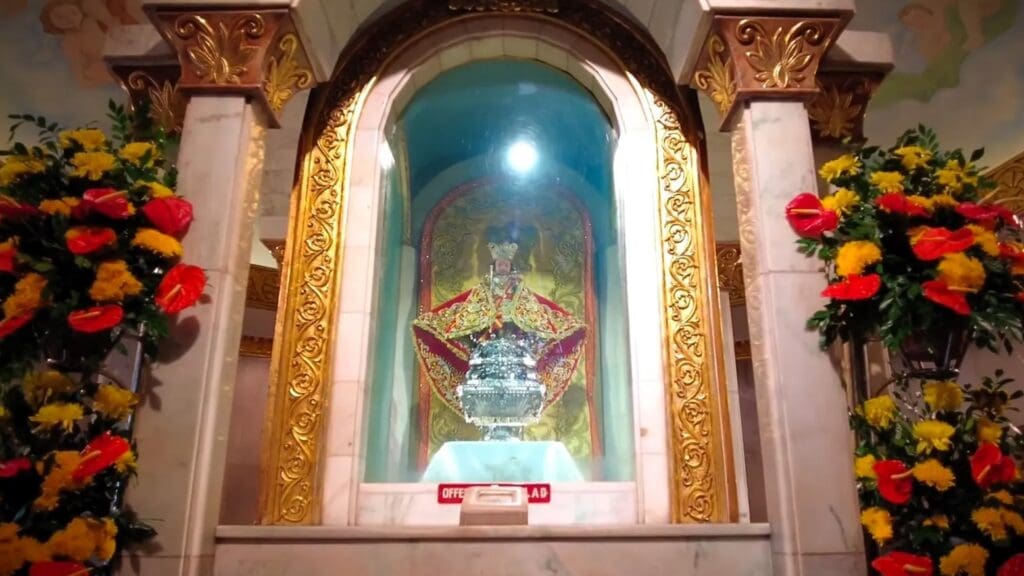
In the bustling heart of Cebu City lies the Santo Niño Basilica, a revered sanctuary that houses the sacred statue of the Santo Niño (Holy Child). This basilica, officially known as the Basilica Minore del Santo Niño, stands as a testament to the deep-rooted Christian faith that thrives in the Philippines. The statue, believed to be one of the oldest religious relics in the country, symbolizes the Filipinos’ devotion and enduring faith.
As I entered the basilica, I was immediately struck by the sense of peace and reverence that enveloped the space. The architecture of the basilica, a blend of Islamic and Neo-classical styles, is as captivating as the spiritual ambiance it exudes. The open courtyard, with its mosaic-tiled floors and surrounding cloisters, offers a tranquil retreat from the city’s hustle and bustle.
The highlight of the Basilica is, undoubtedly, the revered statue of the Santo Niño. Housed in a glass case and dressed in regal garments, the statue is an object of veneration for countless pilgrims who visit the basilica each year. Many come to offer prayers, light candles, and seek blessings, reflecting the profound spiritual connection Filipinos have with the Santo Niño.
The Basilica is not just a place of worship but also a hub of cultural and historical significance. It hosts the annual Sinulog Festival, a vibrant and colorful celebration in honor of the Santo Niño. During this festival, the streets of Cebu City come alive with dance, music, and pageantry, showcasing the rich cultural tapestry of the Philippines.
Visiting the Santo Niño Basilica is an experience that transcends religious boundaries. It offers a glimpse into the Filipino spirit, marked by resilience, devotion, and a deep sense of community. The Basilica stands as a beacon of faith, its walls echoing the prayers and hopes of a nation. For anyone traveling to Cebu City, a visit to this sacred site is a journey into the heart of Filipino spirituality and tradition.
Mactan Shrine, Cebu – Site of the Battle of Mactan
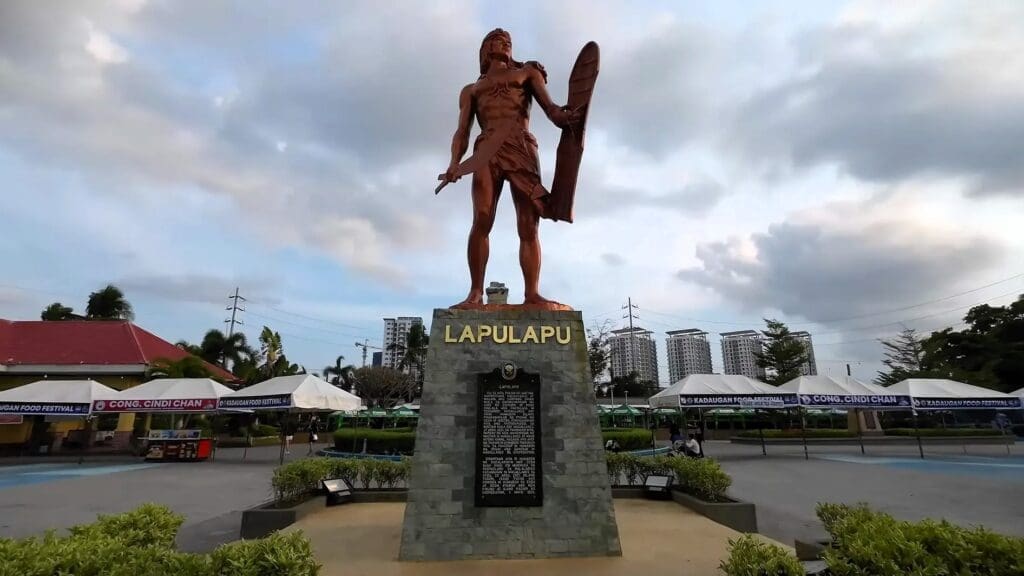
On the island of Mactan in Cebu lies a significant historical site, the Mactan Shrine, dedicated to the valor displayed during the Battle of Mactan. This landmark commemorates one of the Philippines’ most pivotal moments – the resistance led by the native chieftain Lapu-Lapu against Portuguese explorer Ferdinand Magellan. The shrine not only honors the bravery of Lapu-Lapu and his warriors but also marks a defining moment in Philippine history, symbolizing the country’s enduring spirit of independence.
As I approached the Mactan Shrine, I was immediately struck by the imposing statue of Lapu-Lapu, standing tall as a symbol of Filipino bravery and resistance. The monument, with Lapu-Lapu depicted in traditional warrior attire, serves as a powerful reminder of the Filipinos’ resolve to protect their land and freedom. The surrounding park, with its well-kept gardens and pathways, provides a serene setting for reflection on the site’s historical significance.
The Battle of Mactan, fought in 1521, was a crucial event where indigenous forces successfully repelled European invaders. This historic encounter is vividly depicted in murals and plaques throughout the shrine, offering visitors a visual narrative of the battle’s events. The site also includes a marker believed to be the spot where Magellan fell, further immersing visitors in the historical context of this landmark.
Visiting the Mactan Shrine is not just a journey into the past; it is also an experience of the cultural heritage that shapes the Filipino identity today. The shrine hosts various cultural shows and events, particularly during the Kadaugan sa Mactan Festival, which celebrates the victory at Mactan with reenactments, traditional dances, and other festivities.
The Mactan Shrine stands as a poignant tribute to the heroism of Lapu-Lapu and his men. It is a place where history comes alive, reminding visitors of the Philippines’ rich past and the enduring courage of its people. For those exploring Cebu, the Mactan Shrine offers an insightful and inspiring glimpse into the historical and cultural legacy of this vibrant island.
Kawasan Falls, Cebu – A three-stage cascade of clear turquoise water
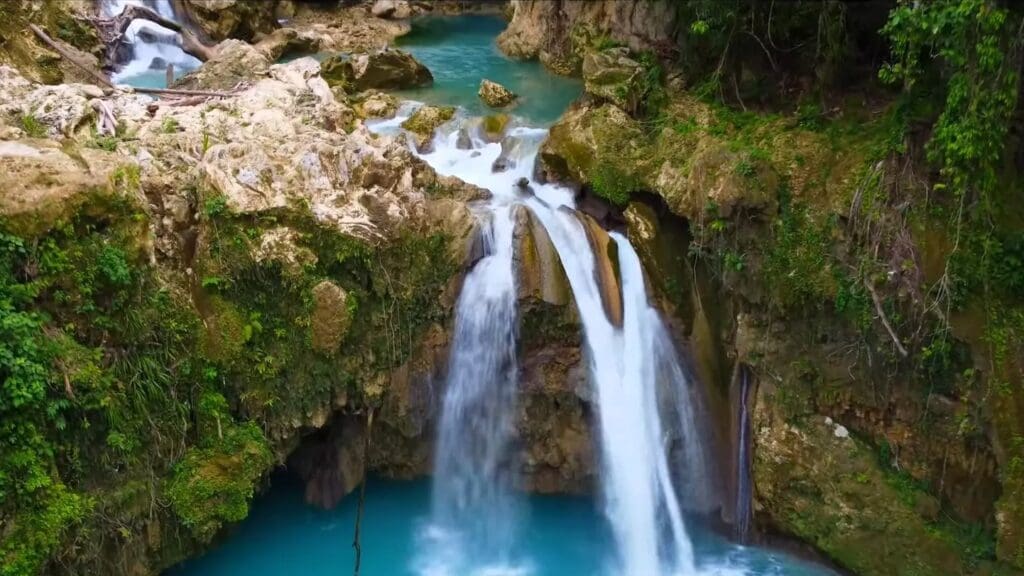
In the lush landscape of Cebu, Kawasan Falls emerges as a breathtaking natural spectacle, captivating visitors with its three-tiered cascade of crystal-clear, turquoise waters. This renowned attraction, nestled in the midst of verdant tropical greenery, offers a serene and rejuvenating escape, making it a must-visit destination for nature lovers and adventure seekers alike.
As I ventured towards Kawasan Falls, the soothing sound of cascading water and the cool, fresh air set the stage for an extraordinary experience. The journey to the falls is a scenic trek, winding through vibrant foliage and alongside flowing streams, enhancing the anticipation of the natural wonder ahead.
The first tier of Kawasan Falls is the largest and most frequented, where the water plunges into a spacious natural pool. Its inviting azure waters are perfect for swimming or simply floating, enveloped by the tranquil beauty of the surrounding landscape. The sound of the waterfall, coupled with the picturesque setting, creates a serene ambiance, ideal for relaxation and unwinding.
Exploring further, the second and third tiers of the falls offer a more secluded and intimate experience. These smaller cascades are tucked away amidst the lush greenery, providing a sense of seclusion and privacy. The journey to these upper levels involves navigating paths and crossing bridges, adding a sense of adventure to the experience.
Kawasan Falls also offers opportunities for more adrenaline-pumping activities, such as canyoneering, where visitors traverse through gorges and leap into pools from varying heights. This exhilarating experience combines the thrill of adventure sports with the breathtaking beauty of the natural environment.
Beyond its natural allure, Kawasan Falls is also a cultural experience. The area is managed by the local community, offering insights into the local way of life. Visitors can enjoy local cuisine at nearby eateries, enhancing the immersive experience of this unique destination.
Visiting Kawasan Falls is an unforgettable experience, showcasing the pristine beauty of Cebu’s natural landscape. Whether seeking a peaceful retreat or an adventurous excursion, Kawasan Falls delivers a trifecta of natural splendor, cultural richness, and exhilarating activities, making it a highlight of any trip to Cebu.
Tubbataha Reefs Natural Park, Palawan – A UNESCO World Heritage Site
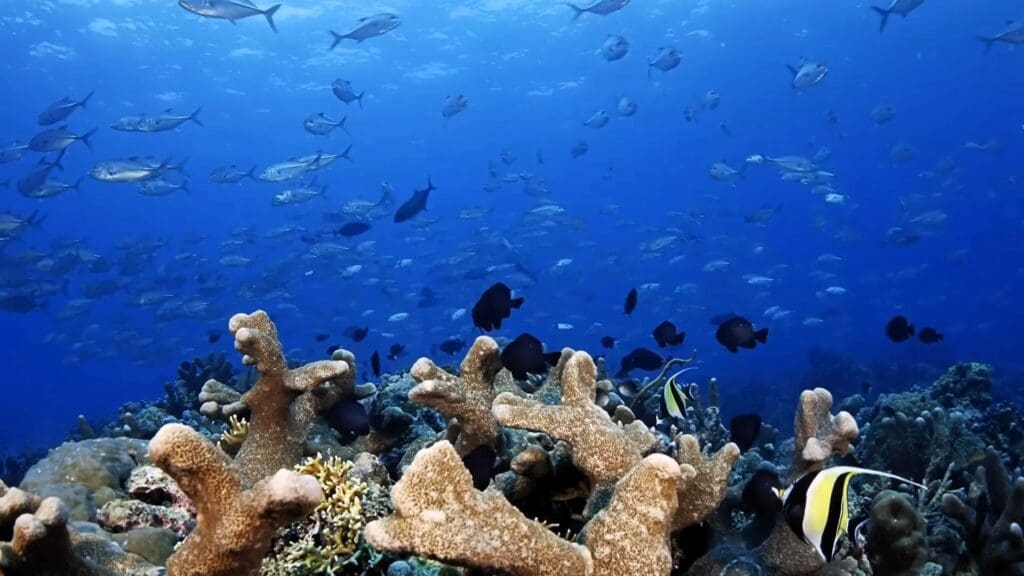
In the heart of the Sulu Sea lies Tubbataha Reefs Natural Park, a UNESCO World Heritage Site renowned for its extraordinary marine biodiversity. This protected area in Palawan is a haven for divers and marine biologists, showcasing some of the most pristine coral reefs and a vast array of marine life in the Philippines.
As I embarked on a journey to explore this underwater paradise, I was astounded by the kaleidoscope of colors and the abundance of life beneath the waves. Tubbataha Reefs encompass two atolls and a Jessie Beazley Reef, each teeming with an incredible variety of corals, fish, sharks, dolphins, turtles, and other marine species. The clarity of the water and the health of the coral formations make Tubbataha Reefs one of the top dive sites in the world.
One of the most striking features of Tubbataha Reefs Natural Park is its role as a nesting site for birds and marine turtles. The islets in the park serve as vital breeding grounds for these creatures, adding to the ecological importance of the area. The park is also a crucial part of the Coral Triangle, known as the global center of marine biodiversity.
Diving in Tubbataha Reefs offers an unparalleled experience. The sheer walls, shallow coral gardens, and extensive lagoons provide a diverse range of underwater landscapes to explore. Each dive is a new adventure, revealing sharks patrolling the depths, schools of vibrant fish darting among the corals, and graceful manta rays gliding through the water.
The management of Tubbataha Reefs Natural Park is a testament to successful conservation efforts. Strict regulations and sustainable tourism practices ensure the protection of this marine treasure for future generations. The park is only accessible by boat, and diving is limited to certain months of the year to minimize human impact.
Visiting Tubbataha Reefs Natural Park is more than just a diving trip; it’s an opportunity to witness the wonders of the underwater world and the importance of preserving such ecosystems. The beauty and ecological significance of Tubbataha Reefs make it a must-visit destination for anyone passionate about marine conservation and the natural world.
Malapascua Island, Cebu – Known for its white sand beaches and thresher sharks
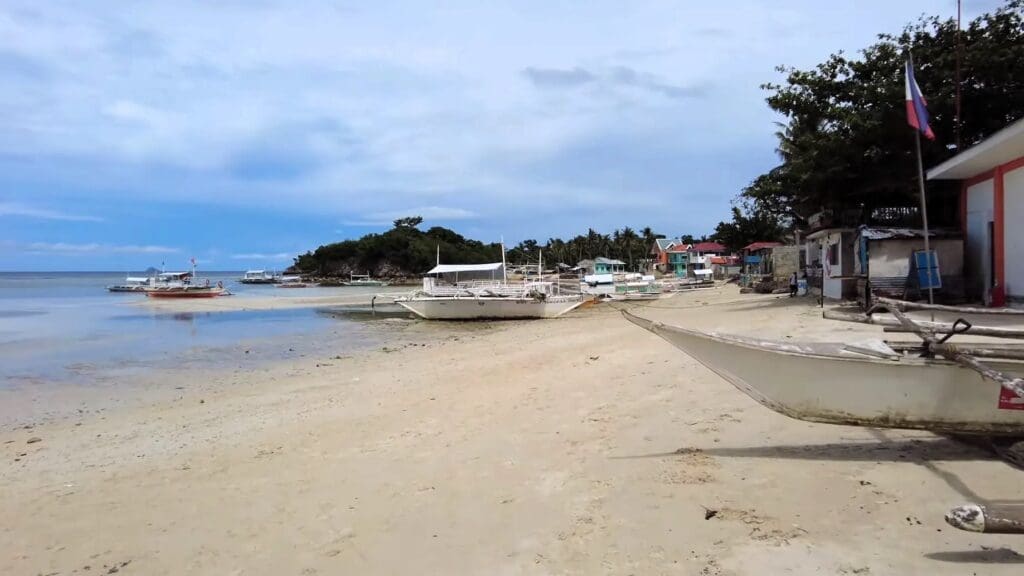
Off the northern tip of Cebu lies Malapascua Island, a small yet stunning destination known for its powdery white sand beaches and exceptional diving opportunities. This idyllic island, with its tranquil ambiance and natural beauty, is a paradise for beach lovers and divers alike, attracting visitors from around the globe.
As I stepped onto the soft sands of Malapascua, I was immediately captivated by its serene beauty. The island, with its palm-fringed beaches and crystal-clear waters, is the epitome of a tropical paradise. But what truly sets Malapascua apart is its underwater world, especially its rare and fascinating thresher sharks.
Diving in Malapascua offers an extraordinary experience, especially at Monad Shoal, a sunken island that serves as a cleaning station for thresher sharks. These elusive and graceful creatures, known for their long, whip-like tails, are a sight to behold as they gracefully glide through the water. It’s one of the few places in the world where divers can regularly encounter these magnificent sharks.
Beyond thresher sharks, the waters around Malapascua are teeming with a rich array of marine life, including manta rays, hammerhead sharks, and vibrant coral gardens. The island’s dive sites cater to all levels of divers, from shallow coral reefs perfect for beginners to deeper, more challenging sites for experienced divers.
Above water, Malapascua exudes a laid-back and friendly atmosphere. The island is small enough to explore on foot, with a variety of local eateries, beachfront bars, and accommodation options ranging from budget guesthouses to more upscale resorts. The locals are warm and welcoming, adding to the island’s charm.
For those seeking a blend of relaxation and adventure in a stunning natural setting, Malapascua Island is a perfect choice. Its pristine beaches and unique diving opportunities make it a must-visit destination in the Philippines, offering an unforgettable experience both above and below the sea.
Boracay, Aklan – Famous for its white-sand beaches
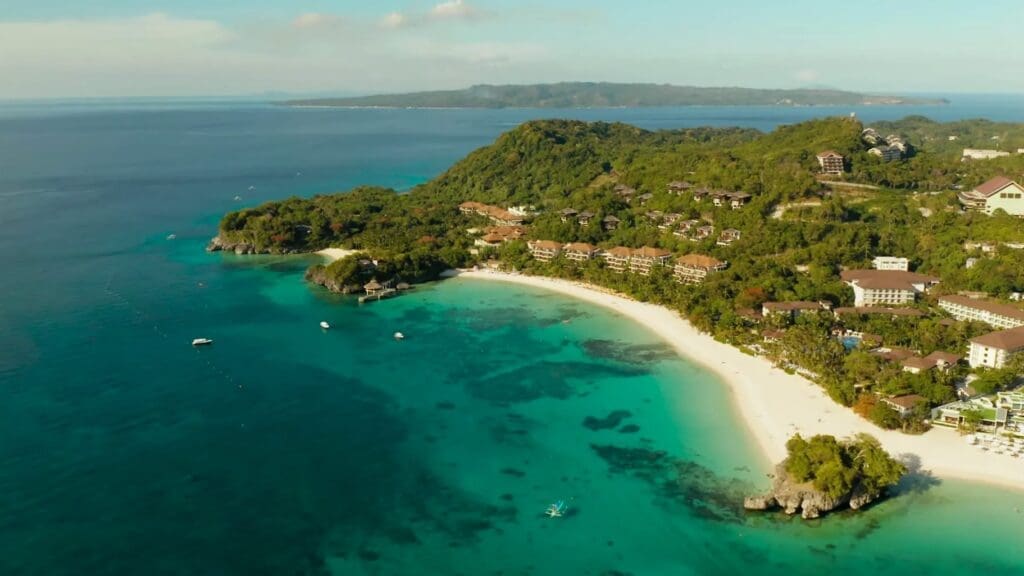
Boracay, a small island in Aklan province, is renowned worldwide for its breathtakingly beautiful white-sand beaches and vibrant nightlife. This tropical paradise, frequently topping lists of the world’s best islands, is a jewel of the Philippines, drawing beach lovers and sun-seekers from all corners of the globe.
As I set foot on the soft, powdery sands of White Beach, the island’s most famous stretch, I was mesmerized by the sheer beauty of the turquoise waters blending seamlessly with the azure sky. The beach, spanning about four kilometers, offers a perfect setting for relaxation, sunbathing, and a variety of water sports.
The charm of Boracay extends beyond its stunning beaches. The island’s lively atmosphere, especially at night, is captivating. Beachfront bars and restaurants come alive with music, dance, and entertainment, offering a fun and vibrant nightlife scene that is as enticing as its daytime allure.
Apart from its party vibe, Boracay is also a haven for water sports enthusiasts. Activities like windsurfing, kiteboarding, snorkeling, and scuba diving are popular here, thanks to the island’s clear waters and diverse marine life. The smaller Bulabog Beach on the island’s eastern side is particularly famous for kiteboarding and windsurfing, attracting enthusiasts from around the world.
For those seeking a more serene experience, the island offers quieter beaches like Diniwid and Puka Shell Beach, where one can enjoy the tranquility and natural beauty away from the crowds. The island also offers a range of accommodations, from luxurious resorts to cozy budget hostels, catering to all preferences and budgets.
Boracay’s recent closure and rehabilitation have only enhanced its appeal, ensuring that this paradise remains pristine and sustainable for future generations. Today, with its environmental initiatives in place, Boracay stands as a testament to responsible tourism, offering a perfect blend of natural beauty, fun, and sustainability.
A trip to Boracay is more than just a beach holiday; it’s an experience of a lifetime, where one can indulge in the island’s natural splendor, lively culture, and endless activities. It’s a destination that truly embodies the spirit of a tropical paradise.
Hinagdanan Cave, Bohol – A naturally lighted cavern with a deep lagoon
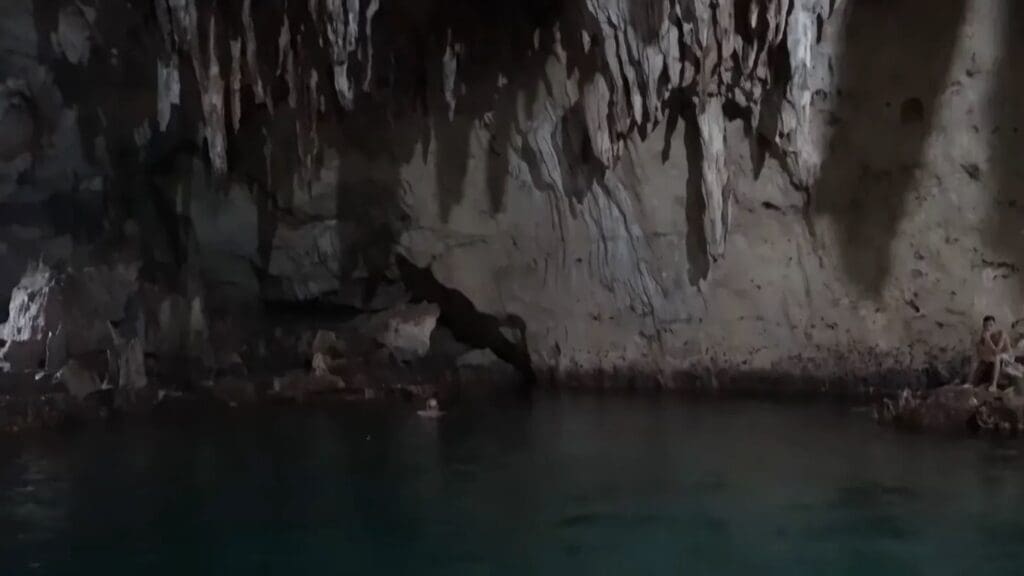
Nestled on the beautiful island of Bohol, Hinagdanan Cave is a stunning natural wonder that captivates visitors with its ethereal beauty and mystical ambiance. This naturally lighted limestone cavern, featuring a deep, crystal-clear lagoon, is one of the island’s hidden gems, offering a unique and enchanting experience.
As I descended the cave’s natural stone steps, I was greeted by the gentle play of light filtering through the cave’s openings, creating a magical atmosphere. The stalactite and stalagmite formations adorning the cave’s interior added to the surreal beauty, each one a unique testament to nature’s artistry over thousands of years.
The centerpiece of Hinagdanan Cave is its deep lagoon. The clear, greenish waters of the lagoon, illuminated by the natural light from above, create a serene and inviting ambiance. The lagoon’s depth and clarity make it an ideal spot for swimming and a refreshing escape from the tropical heat. The cool, calm waters, surrounded by the cave’s majestic rock formations, provide a tranquil and otherworldly swimming experience.
The cave’s natural beauty is complemented by its fascinating history and local legends, adding an element of intrigue and mystique. Local guides often share tales of the cave’s discovery and its significance to the community, making the visit both an educational and awe-inspiring experience.
Visitors to Hinagdanan Cave should be prepared for a bit of adventure, as navigating the cave requires traversing narrow and sometimes slippery paths. However, the effort is well worth it, as the cave offers a unique opportunity to connect with nature’s wonder in a setting that feels like a world apart.
Hinagdanan Cave is not just a geological marvel; it’s a place where nature, history, and legend converge, offering a glimpse into the natural beauty and cultural richness of Bohol. A visit here is a must for anyone seeking an off-the-beaten-path adventure that combines the thrill of exploration with the tranquility of a hidden lagoon.
Oslob Whale Sharks, Cebu – A popular spot for whale shark watching
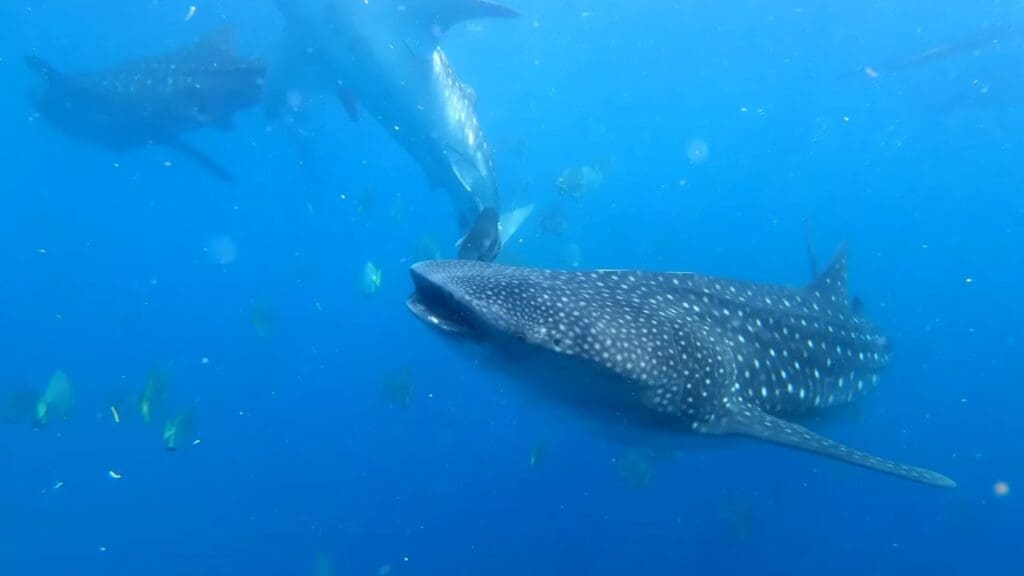
In the tranquil waters of Oslob, Cebu, an extraordinary wildlife encounter awaits — the chance to swim alongside the gentle giants of the sea, the whale sharks. This small coastal town has gained international acclaim for its unique opportunity to witness and interact with these majestic creatures in their natural habitat, making it a must-visit destination for marine life enthusiasts.
As I embarked on a boat into the azure waters of Oslob, the anticipation was palpable. Whale shark watching in Oslob is conducted with an emphasis on respect and conservation, ensuring that these magnificent animals are not disturbed in their natural environment. The local guides are knowledgeable and committed to sustainable tourism practices, providing visitors with guidelines on how to responsibly interact with the whale sharks.
The experience of swimming with whale sharks in Oslob is nothing short of magical. These colossal yet docile fish, known locally as “butanding,” glide gracefully through the water, their spotted bodies reflecting the sunlight. Despite their size, whale sharks are known for their gentle nature, often indifferent to the presence of awe-struck swimmers nearby. Being in such close proximity to these incredible creatures is an experience that evokes a deep sense of wonder and connection with the natural world.
For those who prefer to stay dry, watching the whale sharks from the boats offers an equally mesmerizing experience. The clear waters of Oslob provide excellent visibility, allowing spectators to observe the whale sharks as they surface for feeding. The sight of these giants of the ocean, with their wide mouths and distinctive markings, is a spectacle that leaves a lasting impression.
Oslob’s whale shark watching activity not only provides a once-in-a-lifetime experience but also plays a crucial role in the conservation efforts for these animals. The interaction with tourists has helped raise awareness about whale shark conservation and has become a source of livelihood for the local community, promoting sustainable tourism and environmental stewardship.
A visit to Oslob for whale shark watching is more than just an adventure; it’s an opportunity to witness the beauty and grace of one of nature’s most magnificent creatures. It’s a reminder of the importance of preserving our oceans and the diverse life they sustain. For anyone traveling to Cebu, this encounter with the whale sharks of Oslob is an unforgettable journey into the heart of the marine world.
Siquijor Island – Known for its beaches and healing traditions
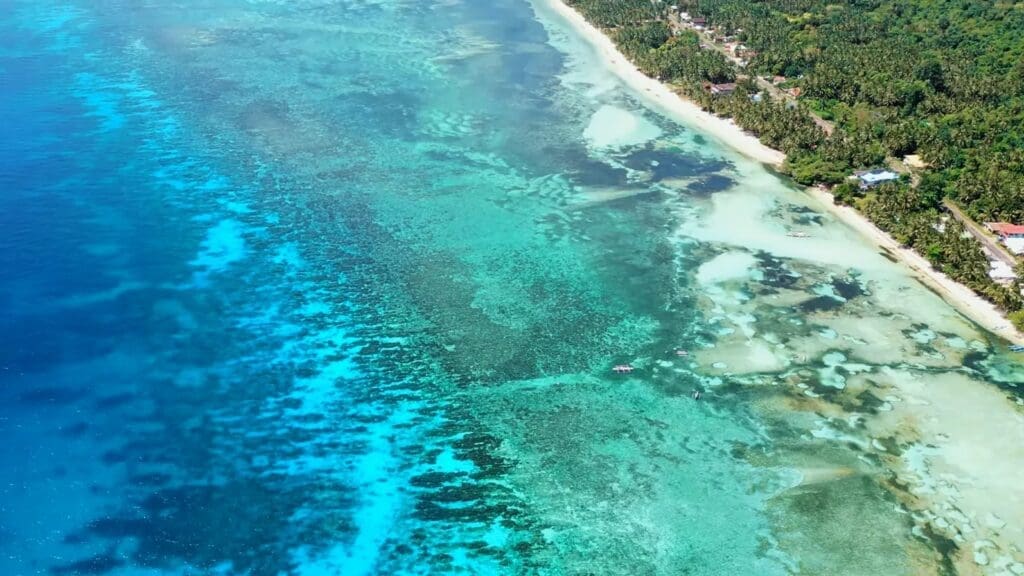
Siquijor Island, often referred to as the “Mystical Island,” is renowned for its captivating beaches and deep-rooted healing traditions. This idyllic destination, shrouded in folklore and mystique, offers a unique blend of natural beauty and cultural intrigue that beckons travelers from around the world.
As I set foot on the island, I was immediately struck by the pristine beauty of its beaches. The powdery white sands and crystal-clear waters create a serene and inviting ambiance, perfect for relaxation and rejuvenation. Whether it’s sunbathing on the shore, snorkeling among vibrant coral reefs, or enjoying a tranquil sunset, the beaches of Siquijor provide an unparalleled tropical escape.
Beyond its stunning coastlines, Siquijor is famous for its traditional healing practices. The island has a long-standing reputation for its folk healers, known locally as “albularyo” These healers, steeped in ancient wisdom, use a combination of herbs, potions, and rituals to cure ailments and provide spiritual guidance. Visitors often seek out these healers to experience their unique and mystical methods, which are an integral part of the island’s cultural heritage.
Exploring the island further reveals more of its enchanting allure. The Cambugahay Falls, with its cascading turquoise waters and natural swimming pools, offers a refreshing retreat. The century-old Balete tree, believed to be enchanted, captivates visitors with its massive roots and a natural fish spa beneath its canopy.
Siquijor’s mystical charm extends beyond its landscapes to its people. The island’s community warmly welcomes visitors, sharing tales of folklore and tradition that add depth to the Siquijor experience. Whether it’s through its breathtaking beaches, healing rituals, or the warmth of its people, Siquijor Island stands out as a destination that beautifully melds the wonders of nature with the intrigue of ancient customs.
Visiting Siquijor Island is more than just a beach holiday; it’s an adventure into a realm of enchantment and tradition. It offers a rare glimpse into a world where nature’s beauty intertwines with cultural mysticism, making it a memorable and unique addition to any Philippine journey.
Leyte Landing Memorial, Leyte – Where General MacArthur returned to the Philippines
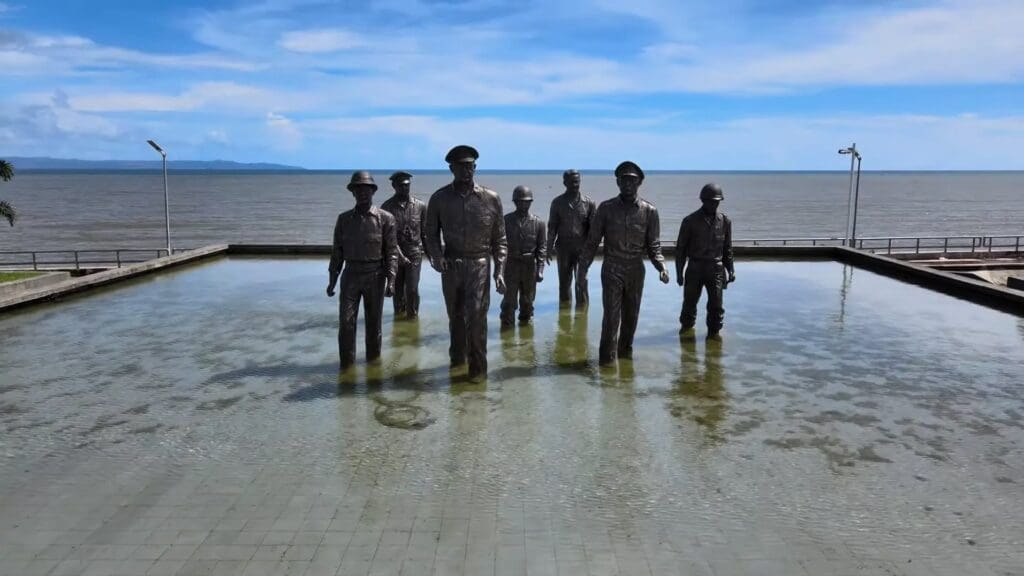
The Leyte Landing Memorial Park stands as a significant historical site in the Philippines, commemorating the momentous return of General Douglas MacArthur to Philippine soil during World War II. This iconic event, which took place on October 20, 1944, marked a turning point in the liberation of the Philippines from Japanese occupation and is etched deeply in the nation’s collective memory.
Located in Palo, Leyte, the memorial features life-sized statues depicting General MacArthur, along with other American soldiers, wading ashore, immortalizing the famous promise “I shall return.” As I walked towards the memorial, I could sense the historical weight of the moment it represents, a symbol of hope, freedom, and the enduring friendship between the Philippines and the United States.
The site overlooks the picturesque Red Beach, where the actual landing took place. The expansive view of the Leyte Gulf adds to the contemplative atmosphere, inviting visitors to reflect on the bravery and sacrifices made during the war. The serene setting juxtaposes the turbulent past, offering a space for remembrance and appreciation of peace.
Visitors to the Leyte Landing Memorial can also explore the nearby MacArthur Landing Memorial National Park. The park provides educational exhibits, historical markers, and beautifully landscaped grounds, making it an informative and peaceful destination for history enthusiasts and tourists alike.
The Leyte Landing Memorial is not just a tribute to a pivotal moment in World War II; it also serves as a reminder of the resilience and courage of the Filipino people in the face of adversity. It’s a must-visit landmark for anyone interested in the rich tapestry of Philippine history and its enduring spirit of liberation and independence.
Camiguin Island – Known for its volcanoes and waterfalls
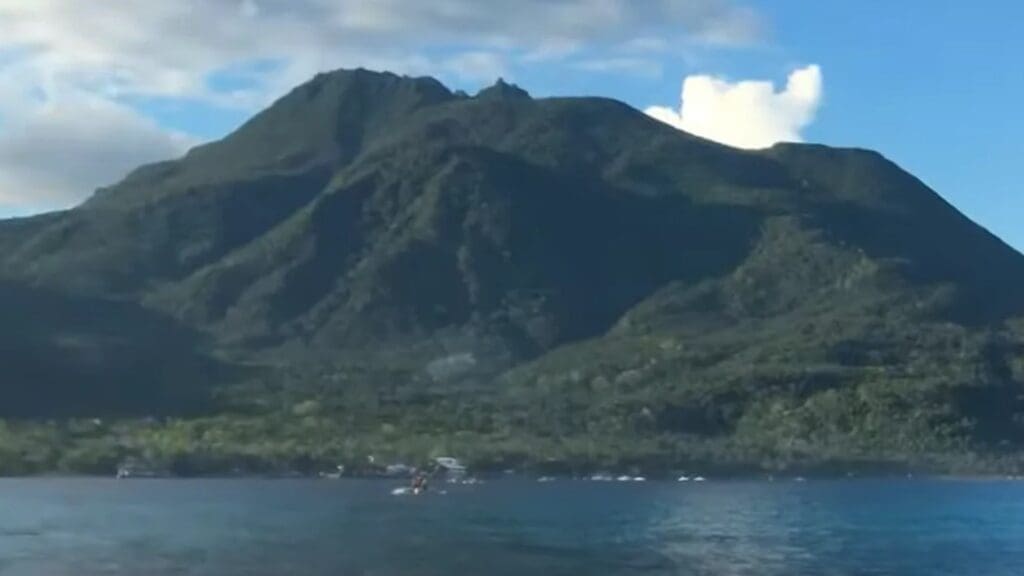
Camiguin Island, often hailed as the “Island Born of Fire,” offers a unique and captivating experience with its impressive array of volcanoes and picturesque waterfalls. This small island province in the Philippines is home to more volcanoes per square kilometer than any other island on Earth, making it an extraordinary destination for nature enthusiasts and adventure seekers.
As I explored Camiguin, I was mesmerized by the dramatic landscapes shaped by its volcanic origins. The island boasts several active and dormant volcanoes, including the famous Mount Hibok-Hibok, whose slopes offer challenging hiking trails leading to stunning panoramic views. The climb reveals the island’s lush vegetation, diverse wildlife, and the breathtaking scenery of the surrounding sea.
The volcanic activity on Camiguin has also blessed the island with numerous hot springs and waterfalls. Among these, the enchanting Katibawasan Falls stands out with its 70-meter high cascade tumbling into a clear, rock pool surrounded by ferns and orchids. The cold, refreshing waters provide a perfect respite from the tropical heat, making it a popular spot for both locals and tourists.
Another must-visit is the Ardent Hot Springs, where naturally heated waters provide a therapeutic bathing experience. Nestled at the foot of Mount Hibok-Hibok, these springs are a testament to the island’s geothermal activity and are ideal for relaxation after a day of exploration.
Camiguin’s rich volcanic landscape is complemented by its pristine beaches, such as the White Island sandbar and the sunken cemetery, which offer unique beach experiences. The island’s relatively small size makes it easy to traverse, allowing visitors to experience its diverse natural attractions within a short span of time.
Camiguin Island is not just a destination; it’s an adventure into the heart of nature’s raw beauty. From its majestic volcanoes and soothing hot springs to its cascading waterfalls and serene beaches, Camiguin offers an unforgettable escape into a world where nature’s power and beauty converge.
Panglao Island, Bohol – Famous for its diving spots and white-sand beaches
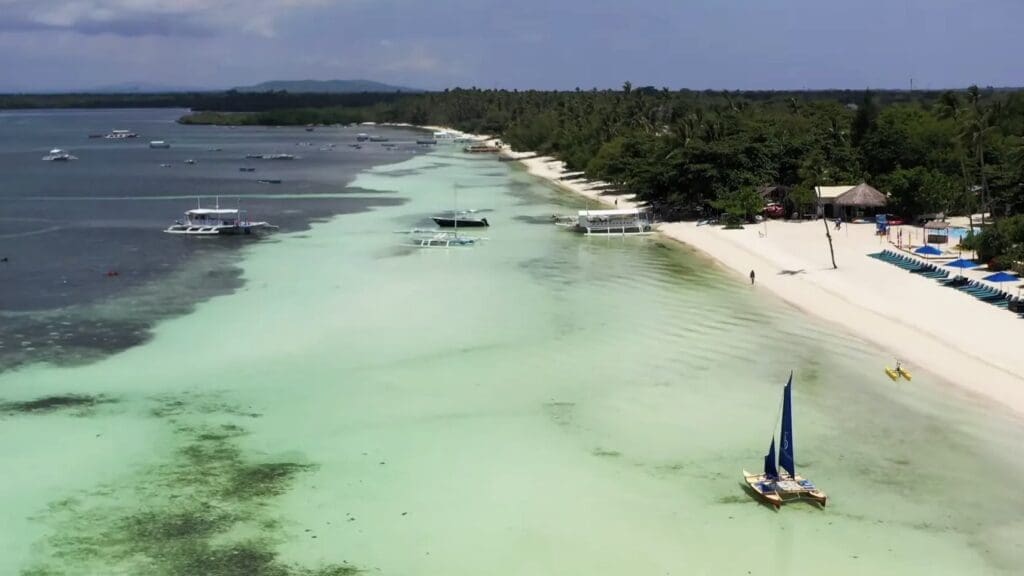
Panglao Island in Bohol is a tropical haven that beckons with its crystal-clear waters, vibrant marine life, and idyllic white-sand beaches. As a renowned destination for diving enthusiasts and beach lovers, Panglao offers an underwater world of wonder and serene shorelines that promise relaxation and adventure in equal measure.
Exploring the depths of Panglao’s seas, I was captivated by the rich biodiversity. The island’s dive sites are a treasure trove for scuba divers, featuring colorful coral gardens, deep wall dives, and a variety of sea creatures, including turtles, barracudas, and a myriad of tropical fish. Popular dive spots like Balicasag Island and Alona Beach not only provide thrilling underwater experiences but also are known for their crystal-clear visibility, making them perfect for both novice and experienced divers.
But Panglao’s allure isn’t just beneath the waves. Its beaches are the epitome of tropical paradise. The famous Alona Beach, with its stretch of powdery white sand fringed by palm trees and the gentle lapping of azure waters, is a perfect spot for sunbathing, swimming, or simply unwinding. The beachfront is lined with resorts, restaurants, and bars, creating a lively atmosphere both day and night.
For those seeking a more secluded experience, the less crowded beaches of Panglao, such as Dumaluan and Doljo, offer tranquil retreats. Here, the rhythm of island life is peaceful, and the scenic beauty is uninterrupted. These beaches are ideal for those who wish to escape the hustle and immerse themselves in the soothing sounds of nature.
Panglao Island’s charm extends beyond its natural beauty. The warmth and hospitality of the local people add to the island’s welcoming atmosphere, making every visitor feel at home. The island also hosts a variety of cultural and culinary experiences, allowing visitors to indulge in local flavors and traditions.
Whether it’s the thrill of exploring vibrant coral reefs, the relaxation of lounging on sun-kissed beaches, or the joy of experiencing local culture, Panglao Island in Bohol is a destination that truly offers something for every traveler. Its combination of natural beauty, underwater wonders, and hospitable ambiance make it a must-visit on any journey to the Philippines.
Bell Tower, Panay Church, Capiz – The largest bell in the Philippines is housed here

In the quiet, historic town of Panay in Capiz, stands a remarkable landmark – the Bell Tower of Panay Church. This structure is not just any ordinary bell tower; it houses the largest bell in the Philippines, known as the “Dakong Lingganay” or Big Bell, making it a significant site in Philippine heritage.
As I approached the towering structure, I was immediately struck by its historical architecture and the sense of timelessness it exuded. The church itself, with its Spanish colonial design, provides a glimpse into the Philippines’ rich historical past. But it’s the bell tower that truly captures the imagination, dominating the landscape with its grandeur.
Climbing up the bell tower, I was filled with anticipation. The bell, cast in 1878 from 70 sacks of coins donated by the townspeople, weighs an impressive 10.4 tons. Its size is awe-inspiring, and the craftsmanship details are a testament to the skill and dedication of those who created it. The sight of the bell up close is an experience in itself, evoking a sense of connection to the generations that have passed before.
What makes the Bell Tower of Panay Church even more special is the history that it has witnessed. The bell has rung through the centuries, marking significant events and calling the faithful to prayer. Its sound, deep and resonant, echoes across the town, a reminder of the enduring presence of the church in the community.
The Bell Tower and the Panay Church are not just historical sites; they are active centers of faith and community life. Visitors to the church can not only marvel at the architectural and historical aspects but also experience the vibrant community spirit that revolves around this religious landmark.
A visit to the Bell Tower of Panay Church in Capiz is more than just a step back in time; it’s an opportunity to witness a living piece of Philippine history. The largest bell in the Philippines is not just a cultural artifact; it is a symbol of the community’s faith, resilience, and unity. Its enduring ring is a sound that resonates not just through the town of Panay, but also in the hearts of those who visit this remarkable landmark.
The Ruins, Talisay, Negros Occidental – Remnants of an ancestral mansion
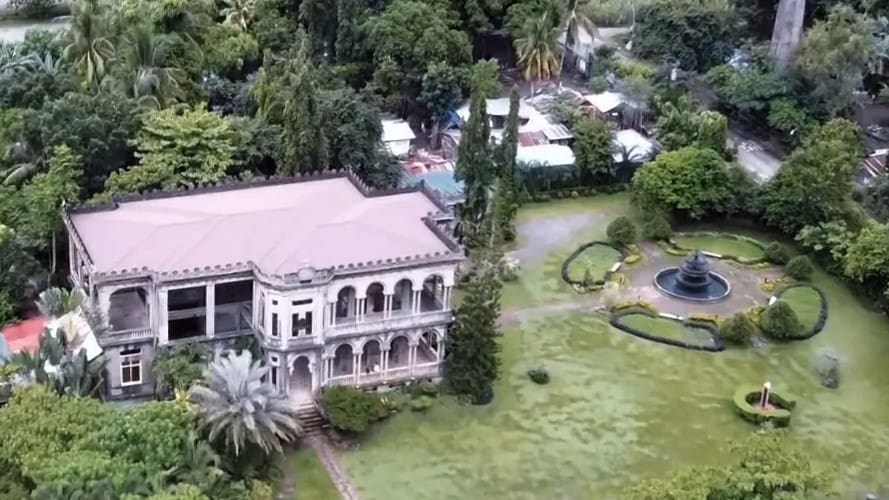
In the heart of Talisay in Negros Occidental, amidst a sprawling sugarcane plantation, lie the hauntingly beautiful remains of an ancestral mansion known as The Ruins. This captivating site, often referred to as the “Taj Mahal of Negros,” is a poignant reminder of a bygone era of elegance and grandeur.
As I wandered through the remains of The Ruins, I was mesmerized by its story of love and tragedy. Built in the early 1900s by a wealthy sugar baron, Don Mariano Ledesma Lacson, in memory of his beloved wife, the mansion was once a symbol of their undying love. Its Italianate architecture, with neo-Romanesque columns and intricately designed facade, spoke of the affluence and taste of its original owners.
The Ruins, now a skeletal structure of what was once a magnificent home, still emanates a sense of grandeur. The sun setting behind its iconic columns casts a golden glow on the coral stone walls, which have withstood both the ravages of time and the flames of World War II. This enduring beauty makes The Ruins a favorite subject for photographers and a popular backdrop for weddings and events.
As I strolled around the manicured gardens that surround The Ruins, I was taken aback by the contrast between the vibrant life of the flora and the poignant decay of the structure. The garden, meticulously maintained, adds to the romantic yet melancholic ambiance of the place, inviting visitors to linger and contemplate the stories embedded in its walls.
A visit to The Ruins in Talisay is more than just a step back into Philippine history; it’s an immersive experience into a tale of love, loss, and resilience. The Ruins stand as a testament to the enduring spirit of the Filipino people, transforming a remnant of the past into a beacon of beauty and hope. This landmark is not just a tourist attraction; it’s a symbol of the rich cultural heritage of Negros Occidental and a must-visit for anyone seeking to connect with the Philippines’ historical and romantic soul.
Kalanggaman Island, Leyte – Known for its pristine waters and sandbar
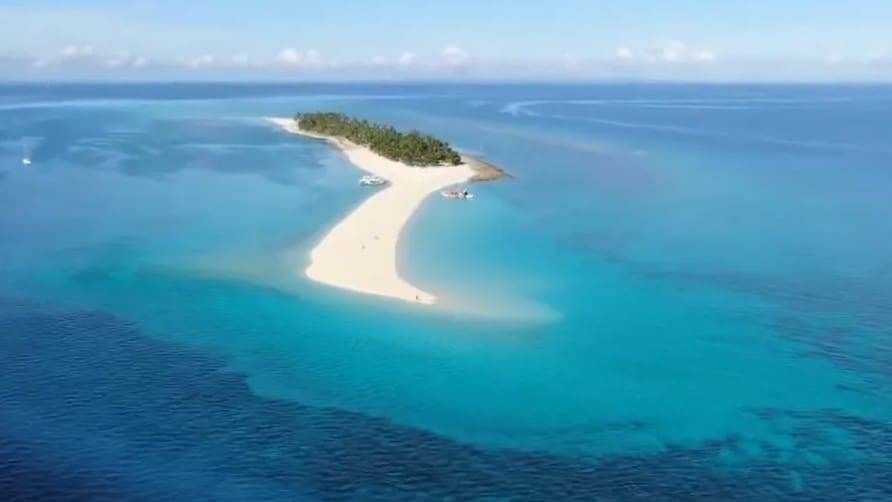
Kalanggaman Island in Leyte is a hidden gem, a slice of paradise that seems almost untouched by the modern world. Renowned for its pristine waters and stunning sandbar, this small island is a picture-perfect example of natural beauty in its purest form.
As I stepped onto the island, the first thing that caught my eye was the spectacular sandbar, stretching out into the azure sea like a pathway to the horizon. The crystal-clear waters, varying in shades of blue and green, gently lapped at the powdery white sands, creating a scene so serene it almost felt surreal.
The island’s seclusion contributes to its unspoiled charm. With no permanent residents and limited structures, Kalanggaman Island offers an escape from the hustle and bustle of daily life. It’s a place where time seems to stand still, allowing one to fully immerse in the tranquility of nature.
Activities on the island are centered around its natural wonders. Snorkeling in the clear waters reveals a vibrant underwater world teeming with marine life, while sunbathing on the sandbar provides a perfect opportunity to soak in the tropical sun. For the more adventurous, kayaking around the island offers a unique perspective of this maritime jewel.
One of the most magical moments on Kalanggaman Island is witnessing the sunset. As the sun dips below the horizon, the sky transforms into a canvas of fiery oranges and pinks, reflecting off the glassy waters and creating a moment of unparalleled beauty.
Visiting Kalanggaman Island is a reminder of the breathtaking beauty that nature can offer. It’s a place where simplicity meets splendor, and where one can find peace and rejuvenation amidst the waves and sand. For anyone seeking a pristine beach experience in the Philippines, Kalanggaman Island is a destination that should not be missed.
Bantayan Island, Cebu – A remote island with beautiful beaches
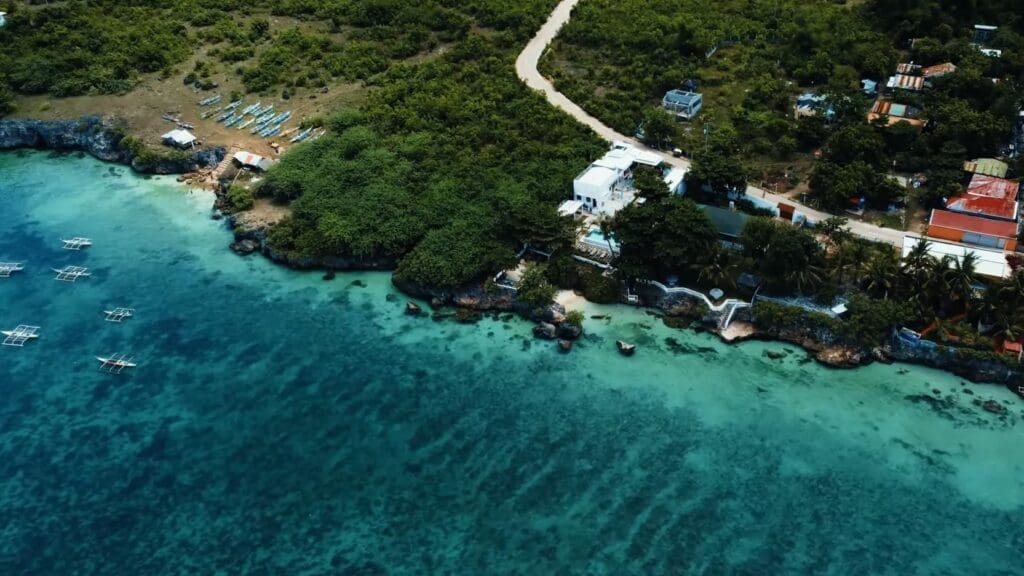
Bantayan Island in Cebu is a captivating destination that epitomizes the idyllic beach getaway. This remote island, nestled in the Visayan Sea, is a sanctuary of tranquility, offering a serene escape with its stunningly beautiful beaches and laid-back atmosphere.
As I arrived on the island, the serene ambiance immediately enveloped me. The pristine, powdery white sand beaches stretched as far as the eye could see, fringed by crystal-clear turquoise waters and swaying coconut palms. The simplicity and natural beauty of Bantayan Island offered an instant sense of calm and relaxation.
One of the island’s most charming aspects is its relative seclusion, which keeps it away from the usual tourist crowds. This seclusion allows for a more intimate beach experience, where the sounds of gentle waves and rustling leaves provide a soothing backdrop. It’s a place where time slows down, allowing visitors to savor every moment of peace and natural beauty.
Exploring Bantayan Island reveals a variety of delightful experiences. From leisurely strolls along the beach to swimming in the warm, inviting waters, every activity here feels like a celebration of nature’s gifts. For those seeking a bit of adventure, snorkeling and island hopping provide opportunities to discover the rich marine life and nearby islets.
The local community on Bantayan Island adds to its allure. The people are warm and welcoming, offering a glimpse into their laid-back island lifestyle. The island’s cuisine, with an emphasis on fresh seafood and local flavors, is a gastronomic delight, enhancing the overall experience of the visit.
As the day comes to an end, the sunsets on Bantayan Island are nothing short of spectacular. The sky turns into a palette of vibrant colors, creating a picture-perfect scene that encapsulates the island’s tranquil beauty.
Bantayan Island is more than just a beach destination; it’s a haven where one can disconnect from the outside world and reconnect with nature’s serene beauty. For anyone looking to escape to a peaceful, picturesque beach setting in the Philippines, Bantayan Island in Cebu is an unmissable destination.
Danao Adventure Park, Bohol – Offers eco-adventure activities
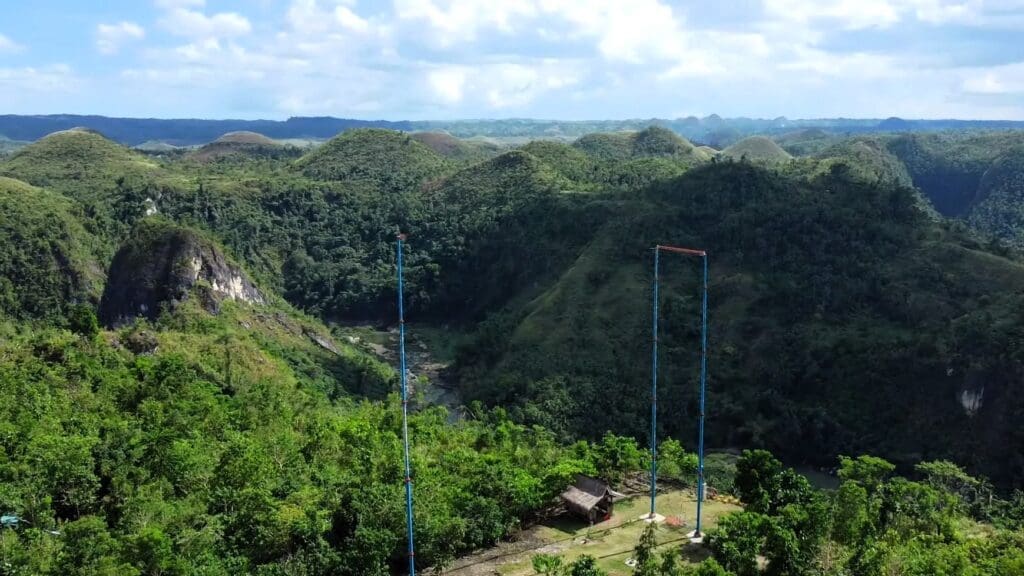
Danao Adventure Park in Bohol is a thrilling destination for those seeking a blend of nature and adventure. Situated amidst the lush landscapes of Bohol, this eco-adventure park offers a wide array of activities that cater to thrill-seekers and nature enthusiasts alike.
From the moment I stepped into the park, I was struck by the sheer variety of adventure options available. One of the highlights is the park’s famous “Plunge,” a canyon swing over a 200-meter gorge that promises an adrenaline rush like no other. The exhilarating experience of swinging over the breathtaking gorge was both terrifying and thrilling, providing a unique way to appreciate the park’s natural beauty.
For those who prefer a more relaxed pace, Danao Adventure Park also offers activities like kayaking, river trekking, and caving. These activities allow visitors to explore the park’s natural wonders at their own pace while enjoying the serene beauty of the Bohol landscape.
The park is also home to the thrilling “Suislide,” a zipline that spans across the gorge, offering panoramic views of the surrounding area. Gliding over the lush greenery with the wind rushing past was an unforgettable experience, offering a bird’s-eye view of the park’s stunning scenery.
Eco-consciousness is at the heart of Danao Adventure Park, with a strong emphasis on preserving the natural environment while providing exciting activities. The park is an example of sustainable tourism, where adventure and environmental stewardship go hand in hand.
Beyond the adrenaline-pumping activities, Danao Adventure Park is also a place of tranquility. The park’s natural setting is perfect for moments of reflection and relaxation, away from the hustle and bustle of everyday life.
Danao Adventure Park is not just an adventure destination; it’s a celebration of nature and thrill. Whether you’re looking to push your limits with high-adrenaline activities or simply enjoy the beauty of nature, this park in Bohol is a must-visit for anyone traveling to the Philippines. It’s a place where every visitor can find something to excite and inspire, amidst the backdrop of Bohol’s stunning landscapes.
Mindanao Region Landmarks in the Philippines
Mindanao, the southernmost region of the Philippines, is a land of breathtaking natural wonders and rich cultural heritage. It is a region where adventure and serenity coexist, offering a diverse range of experiences for visitors. The Puerto Princesa Underground River in Palawan, a UNESCO World Heritage Site, is a marvel of limestone formations and a unique subterranean ecosystem. For those seeking adventure, Mount Apo in Davao City, the highest peak in the Philippines, presents a challenging and rewarding trek with stunning panoramic views. The Tinuy-an Falls in Bislig City, often dubbed as the “Niagara Falls of the Philippines,” is a multi-tiered waterfall that offers a serene natural retreat. Mindanao’s pristine beaches, such as Dahican Beach in Mati City, are perfect for relaxation and water sports, while the Enchanted River in Surigao del Sur captivates with its mystical turquoise waters. The Island Garden City of Samal in Davao del Norte is a haven of beautiful beach resorts and scuba diving spots. The Cagayan de Oro River in Misamis Oriental provides exhilarating white-water rafting experiences. Mindanao is a region that not only showcases the Philippines’ natural beauty but also its cultural richness, making it an integral part of the country’s most famous landmarks.
Mount Apo, Davao City – The highest mountain in the Philippines
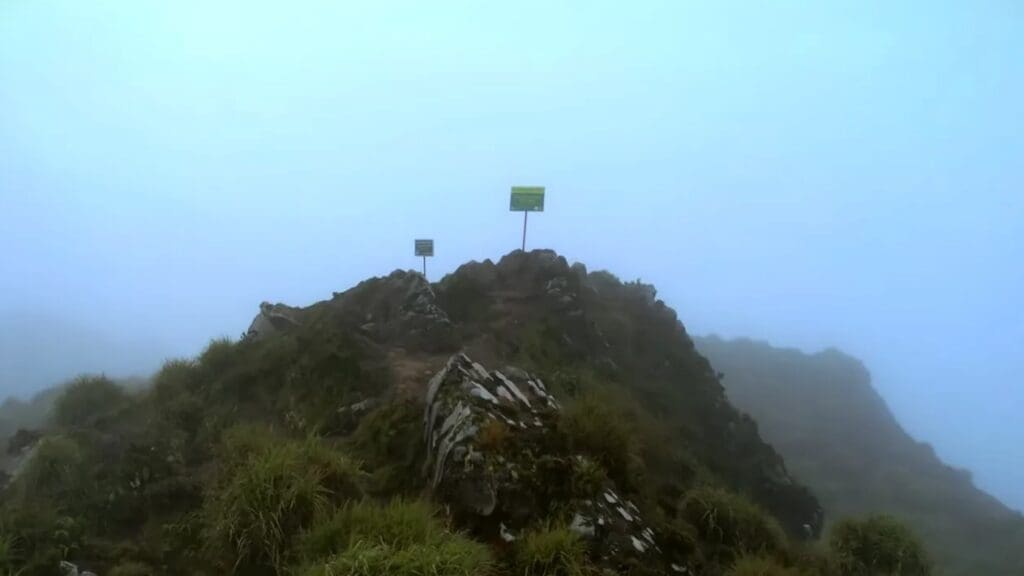
Mount Apo, standing proudly in Davao City, is not just the highest mountain in the Philippines but also a symbol of majestic natural beauty and challenging adventure. Rising to an impressive 2,954 meters (9,692 feet), it beckons trekkers, nature lovers, and bird watchers from around the world.
The journey to the summit of Mount Apo is as rewarding as it is challenging. Hikers traverse diverse landscapes, including rainforests, rivers, and even sulfuric vents, witnessing the rich biodiversity that thrives on the mountain. The trek offers a chance to encounter various wildlife, including the Philippine eagle, the country’s national bird, which makes its home in the lush forests of Mount Apo.
Reaching the summit provides a sense of unparalleled achievement. The panoramic view from the top encompasses rolling hills, neighboring peaks, and the stunning Davao Gulf, offering a visual feast that is truly unforgettable. On clear days, the horizon seems endless, providing a surreal experience as you stand atop the highest point in the country.
Mount Apo is not only a trekker’s paradise but also holds cultural significance. It’s considered a sacred place by the indigenous peoples living around the mountain, adding a layer of cultural richness to its natural grandeur.
Whether you’re an experienced mountaineer looking for your next challenge or a nature enthusiast seeking a unique outdoor experience, Mount Apo offers an adventure that combines physical endurance, natural beauty, and cultural discovery. It’s a landmark that represents the best of the Philippine landscape and spirit.
Pearl Farm Beach Resort, Davao – A luxurious beach resort on Samal Island
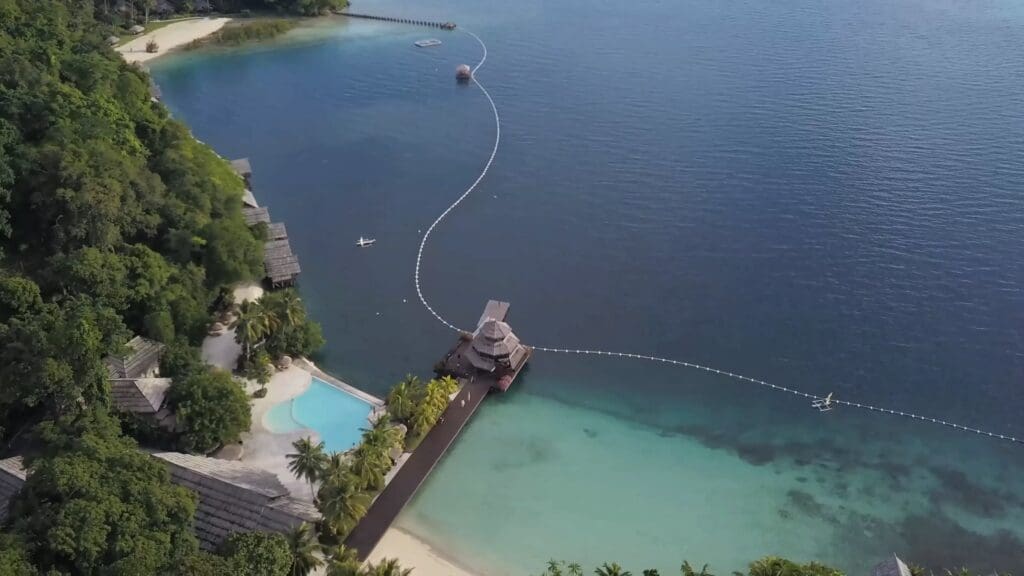
Nestled on the tranquil shores of Samal Island in Davao, Pearl Farm Beach Resort stands as an epitome of luxury and serene beauty. This exquisite resort, once a cultivation farm for pearls, has been transformed into a haven of relaxation and indulgence, offering guests a unique blend of natural charm and upscale comfort.
As I stepped into the resort, I was immediately captivated by the stunning vistas of the azure sea, complemented by the resort’s traditional Filipino architectural design. The overwater villas, perched above the crystal-clear waters, offer a mesmerizing experience, combining modern luxury with the allure of island living. Each villa is a sanctuary of peace, with private balconies that provide breathtaking views of the sea and the surrounding tropical paradise.
The resort’s amenities are designed to pamper and rejuvenate. From the infinity pool that seems to merge with the sea to the Mandaya Spa, where traditional healing techniques are used to soothe the body and mind, every aspect of Pearl Farm is geared towards creating an atmosphere of exclusive comfort. The resort’s dining options are a gastronomic delight, with restaurants serving a fusion of local and international cuisine, all prepared with the freshest ingredients.
Activities at Pearl Farm Beach Resort cater to a range of interests. Guests can engage in various water sports, explore the rich marine life through scuba diving and snorkeling, or simply bask in the sun on the resort’s pristine beach. For those seeking a deeper connection with nature, the resort organizes excursions to the nearby attractions of Samal Island, including waterfalls and caves.
Pearl Farm Beach Resort is more than just a destination; it’s an experience that embodies the beauty and hospitality of Davao and the Philippines. Whether seeking a romantic getaway, a family vacation, or a solitary retreat, this luxurious beach resort on Samal Island promises an unforgettable stay, merging the allure of pristine nature with the comforts of modern luxury.
Tinuy-an Falls, Surigao del Sur – A multi-tiered waterfall
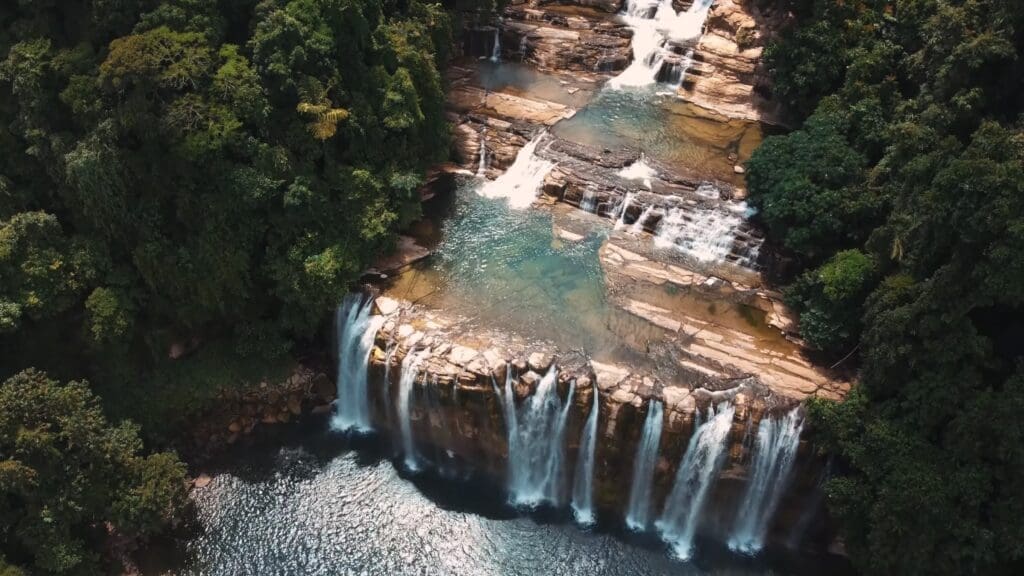
In the heart of Surigao del Sur lies Tinuy-an Falls, often hailed as the “Niagara Falls of the Philippines.” This awe-inspiring natural wonder is a series of multi-tiered waterfalls, cascading down with a symphony of splashes into crystal-clear pools. As I approached Tinuy-an Falls, I was captivated by its grandeur; the waterfalls stretch across a wide area, creating a breathtaking curtain of water that seems to dance in the light.
Each tier of Tinuy-an Falls offers a unique perspective and experience. The main waterfall, with its broad and powerful cascade, is a spectacle of nature’s force and beauty. Visitors can take a bamboo raft ride right up to the waterfall’s base, feeling the refreshing spray and the thunderous sound of water hitting the pool below.
Surrounded by lush tropical greenery, Tinuy-an Falls is not just a visual treat but also a serene escape from the hustle and bustle of city life. The natural pools at each level are perfect for a refreshing swim, and the surrounding area is ideal for picnics and relaxation.
One of the most magical times to visit Tinuy-an Falls is in the early morning when the sunlight breaks through the trees and creates rainbows in the mist. This natural spectacle adds a mystical quality to the falls, making it a photographer’s paradise.
Tinuy-an Falls is more than just a tourist spot; it’s a testament to the pristine beauty of the Philippines’ natural landscapes. Whether you’re an adventure seeker, a nature lover, or just in need of a tranquil retreat, Tinuy-an Falls is a destination that should not be missed. Its majestic waterfalls, lush surroundings, and serene ambiance make it a highlight of any visit to Surigao del Sur.
Enchanted River, Surigao del Sur – A deep spring river with clear, blue water

Nestled in the lush landscapes of Surigao del Sur, the Enchanted River presents a stunning spectacle of nature’s artistry. This deep spring river, famed for its ethereal, clear blue waters, seems to emerge straight from a fairy tale. Its unique hue, ranging from sapphire to jade, changes throughout the day, adding to the mystique of this hidden gem.
Visitors to the Enchanted River are often struck by the surreal clarity of the water, which allows a view deep into the river’s depths, revealing schools of fish that seem to float in mid-air. The river’s source remains a mystery, further fueling the folklore surrounding its enchantment. Local legends speak of spirits guarding the river, adding an element of intrigue and wonder.
The area around the river offers a serene setting for relaxation and contemplation. The lush greenery and the gentle sound of flowing water provide a tranquil backdrop, perfect for a day of unwinding in nature’s lap. For the more adventurous, snorkeling in the Enchanted River offers a chance to explore its underwater wonders, with visibility so clear it feels like swimming in air.
Accessibility to the Enchanted River is made easy with well-maintained facilities, ensuring a comfortable visit for all. Despite its growing popularity, the river retains its unspoiled beauty, making it a must-visit destination for those seeking a unique natural experience in Surigao del Sur.
The Enchanted River stands as a testament to the Philippines’ natural splendor. Its crystal-clear waters, combined with the lush surroundings and the air of mystery that envelops it, make a visit to this enchanting river an unforgettable experience.
Davao Crocodile Park, Davao City – A crocodile conservation center

In the bustling city of Davao, the Davao Crocodile Park stands as a unique and intriguing destination for wildlife enthusiasts. Dedicated to the conservation and study of crocodiles, this park is not just a tourist attraction but also a vital center for research and education about these fascinating reptiles.
At the Davao Crocodile Park, visitors have the opportunity to see a variety of crocodile species, both Philippine natives and those from other parts of the world. The park’s commitment to providing a natural habitat for these animals is evident in the carefully designed enclosures that mimic their natural environments.
Beyond observing crocodiles, the park offers interactive experiences like educational tours, where knowledgeable guides share insights into the behavior, biology, and conservation status of these ancient creatures. The park also focuses on the breeding and care of crocodiles, contributing to the global efforts in crocodile conservation.
But the park isn’t just about crocodiles. It’s home to a diverse range of other animals, including birds, snakes, and monkeys, making it a comprehensive wildlife experience. The Davao Crocodile Park is a testament to the city’s commitment to wildlife conservation and a must-visit for those who want to learn more about the natural world and its fascinating inhabitants.
Maria Cristina Falls, Iligan City – A major source of hydroelectric power in the region
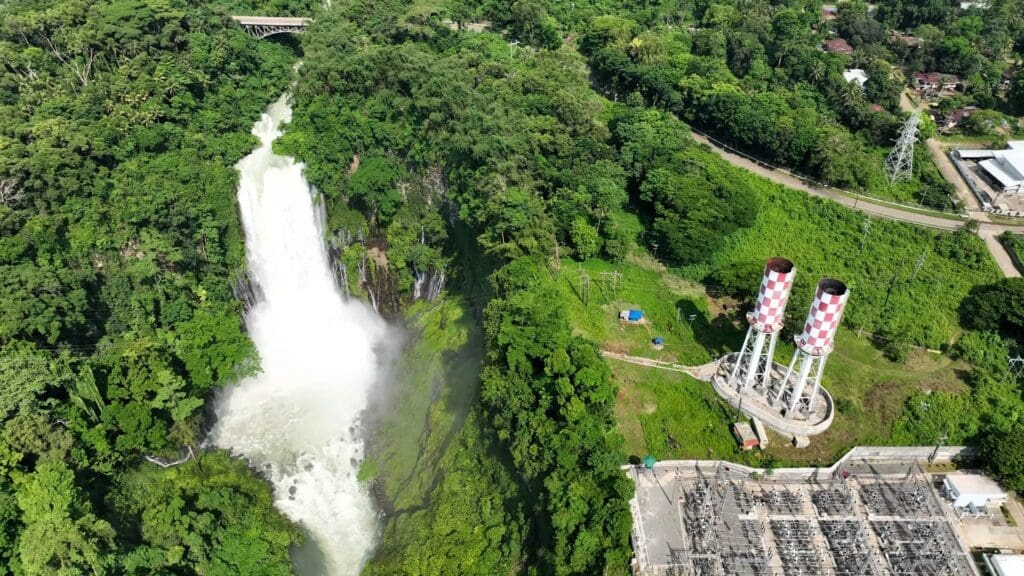
Maria Cristina Falls, located in the vibrant city of Iligan, is not only a stunning natural spectacle but also a vital source of hydroelectric power for the region. Known as the “twin falls” due to the rock at the brink of the waterfall splitting the flow into two separate streams, this waterfall is a testament to the harmony of natural beauty and practical utility.
As I approached the viewing deck, the sheer force and beauty of the cascading waters of Maria Cristina Falls were immediately apparent. The falls, with a height of about 320 feet, create a powerful and mesmerizing sight. The sound of the rushing water is both thunderous and exhilarating, adding to the overall awe-inspiring experience.
What sets Maria Cristina Falls apart is its role in the region’s development. The waterfall is the primary source for the Agus VI Hydroelectric Plant, one of the key facilities supplying electricity to Mindanao. This integration of natural resource and technological advancement highlights the Philippines’ efforts in sustainable energy utilization.
The falls also offer recreational activities for visitors, including nature walks and picnics in the surrounding area, enriched by lush flora and fauna. Educational tours are available, focusing on both the natural aspects of the falls and its significance in renewable energy production.
Visiting Maria Cristina Falls provides not only a visual treat but also an insightful look into the Philippines’ commitment to sustainable practices. This landmark beautifully bridges the gap between nature’s majesty and human ingenuity, making it a must-visit for those exploring Iligan City.
Samal Island, Davao – Known for its white-sand beaches and clear waters
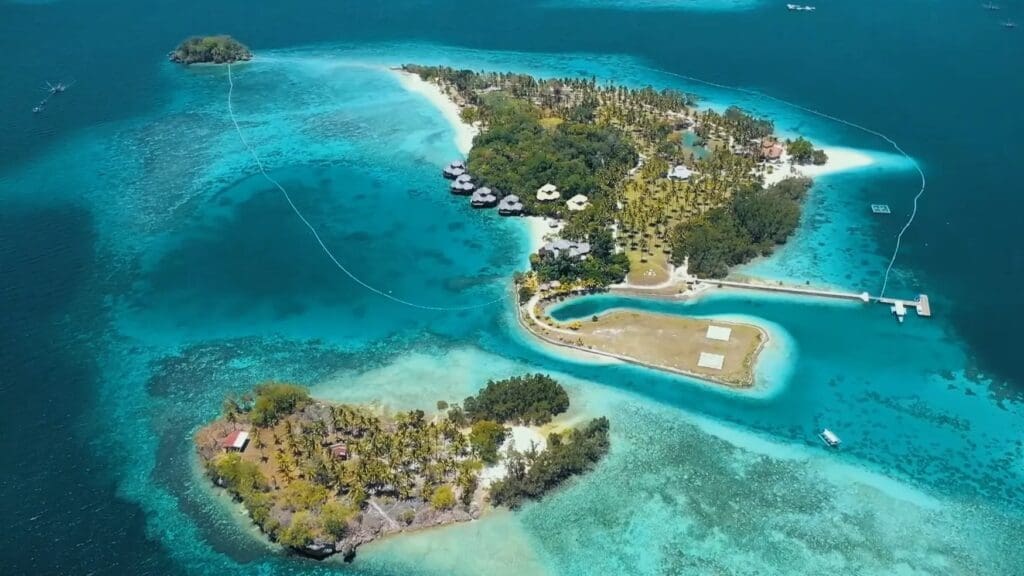
Samal Island, a gem in the Davao Gulf, is a picturesque sanctuary famed for its pristine white-sand beaches and crystal-clear waters. As I set foot on this idyllic island, I was instantly captivated by its serene beauty and the warm, inviting ambiance it offered. Known as the “Garden City of Samal,” it’s a perfect blend of natural splendor and tranquil leisure, making it a beloved destination for beach enthusiasts and nature lovers alike.
The island’s coastline, adorned with numerous beaches and resorts, caters to a wide range of preferences, from luxurious relaxation to adventurous water sports. The clarity of the waters around Samal Island is ideal for snorkeling and diving, offering a glimpse into the vibrant underwater world teeming with colorful marine life. For those seeking a more laid-back experience, the soft sandy shores provide the perfect setting for sunbathing and leisurely strolls.
Exploring Samal Island further, I discovered various hidden coves and waterfalls, each adding to the island’s enchanting character. The lush greenery and tropical landscapes serve as a backdrop for a variety of outdoor activities, including hiking, bird watching, and island-hopping tours, which reveal the diverse facets of this island paradise.
One of the highlights of my visit to Samal Island was the opportunity to engage with the local community. The warm hospitality of the island’s residents, along with their rich cultural heritage, adds depth to the visitor’s experience. Traditional cuisine, local crafts, and cultural performances are integral parts of the island’s charm, offering a taste of the vibrant life in Davao.
Samal Island is not just a destination; it’s an experience that embodies relaxation, adventure, and cultural richness. Its natural beauty, combined with the array of activities and warm hospitality, makes it an irresistible retreat for those seeking a tranquil yet vibrant island escape in the Philippines.
Monfort Bat Sanctuary, Samal Island – Home to the largest colony of fruit bats
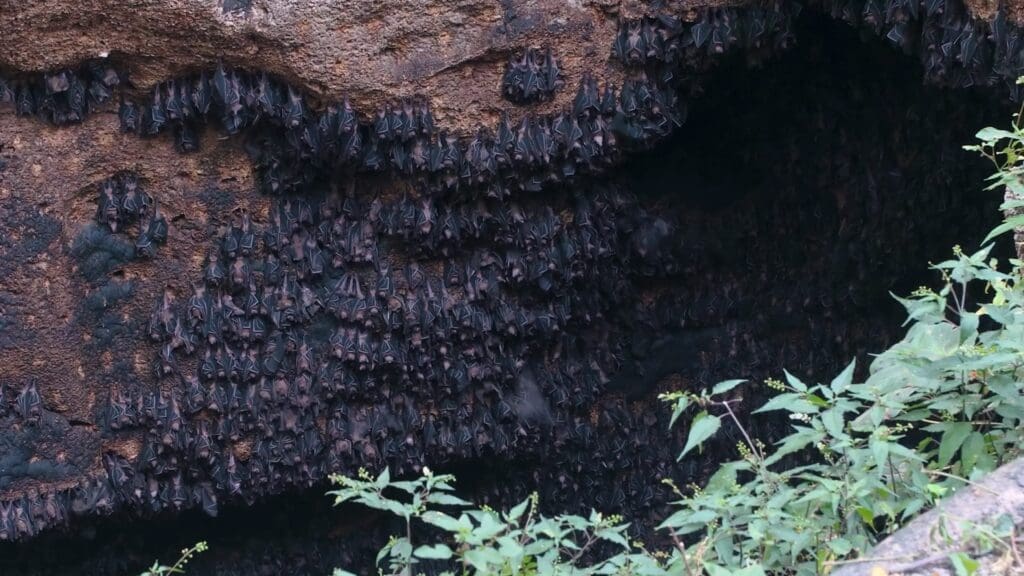
On Samal Island lies a unique and astonishing natural wonder, the Monfort Bat Sanctuary. Home to the largest colony of fruit bats in the world, this sanctuary is a testament to nature’s marvels and the importance of conservation efforts. As I ventured into this unusual habitat, I was greeted by the remarkable sight of countless bats blanketing the cave ceilings, a truly awe-inspiring scene.
The Monfort Bat Sanctuary serves as a crucial ecological preserve for the Geoffroy’s Rousette fruit bats. The caves provide a safe haven for these nocturnal creatures, contributing significantly to the ecological balance by aiding in seed dispersal and forest regeneration. The sheer number of bats, estimated in the millions, creates an almost surreal atmosphere, with the gentle flapping of wings and soft chirps filling the air.
Visitors to the sanctuary have the unique opportunity to observe these fascinating animals in their natural environment. Informative tours, led by knowledgeable guides, offer insights into the bats’ behavior, lifecycle, and their critical role in the ecosystem. The experience is not only educational but also an eye-opener to the importance of wildlife preservation.
As I walked through the sanctuary, it was clear that the conservation efforts here are driven by a deep respect and understanding of these creatures. Efforts to protect and maintain the sanctuary have enabled the bats to thrive in a safe and undisturbed environment, showcasing a successful model of coexistence between humans and wildlife.
The Monfort Bat Sanctuary is more than just a tourist attraction; it’s a symbol of environmental stewardship and a must-visit for anyone interested in wildlife conservation and natural wonders. The experience of witnessing this vast colony of fruit bats is not only unique but also a reminder of the delicate balance of nature and the responsibility we have to protect it.
Camiguin Island – Known for its volcanoes and waterfalls
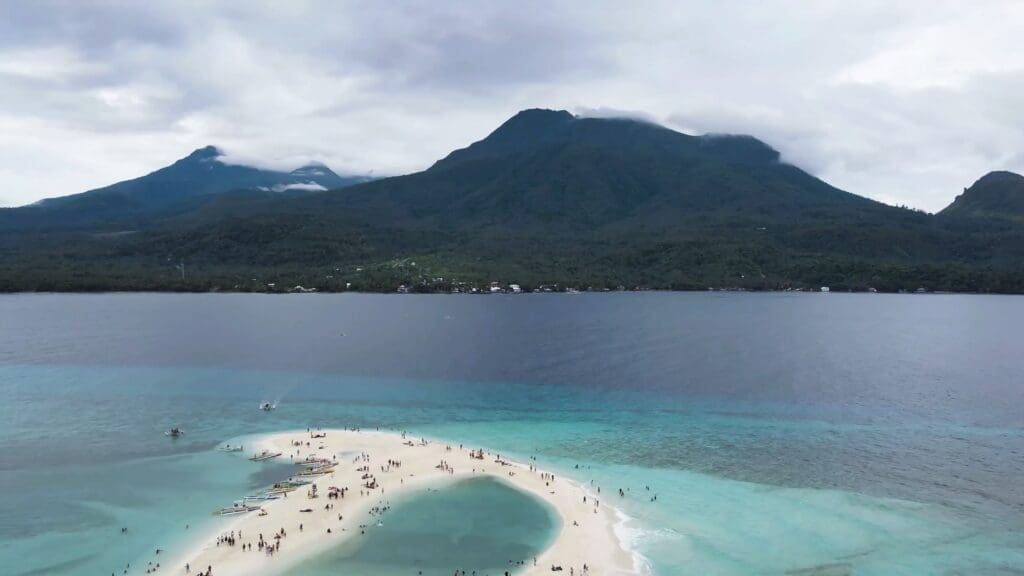
Camiguin Island, often hailed as the “Island Born of Fire,” offers a stunning landscape shaped by its volcanic history. Known for its picturesque volcanoes and enchanting waterfalls, this island in the Philippines is a haven for nature lovers and adventure seekers. As I explored Camiguin, I was captivated by its lush greenery, dramatic volcanic peaks, and the soothing cascades of its numerous waterfalls.
The island boasts seven volcanoes, including the still-active Mount Hibok-Hibok, which provides a challenging and rewarding trek for hikers. The trek up Mount Hibok-Hibok is not just about reaching the summit but also about journeying through diverse ecosystems, from thick forests to sulphuric vents and craters. The view from the top, overlooking the island and the surrounding sea, is breathtaking and well worth the effort.
Camiguin’s waterfalls are equally mesmerizing. The most famous, Katibawasan Falls, plunges over 70 meters into a clear pool surrounded by ferns and trees – a perfect spot for a refreshing swim. Tuasan Falls, another popular destination, is a hidden gem tucked away in lush vegetation, offering a serene escape from the busier tourist spots.
Aside from its natural wonders, Camiguin Island is steeped in history, evident in its old churches and ruins, remnants of past volcanic eruptions. The Sunken Cemetery, marked by a large cross standing in the sea, is a poignant reminder of the island’s volcanic past and a must-visit for its unique setting and historical significance.
Camiguin Island’s combination of natural beauty, adventure, and history makes it a unique and compelling destination. Whether you’re hiking up a volcano, swimming under a waterfall, or exploring historical sites, Camiguin promises an experience filled with awe and wonder. The island’s peaceful atmosphere and stunning scenery provide a perfect backdrop for a memorable getaway, making it a must-visit for those exploring the natural beauty of the Philippines.
Siargao Island – Famous for its surfing spots
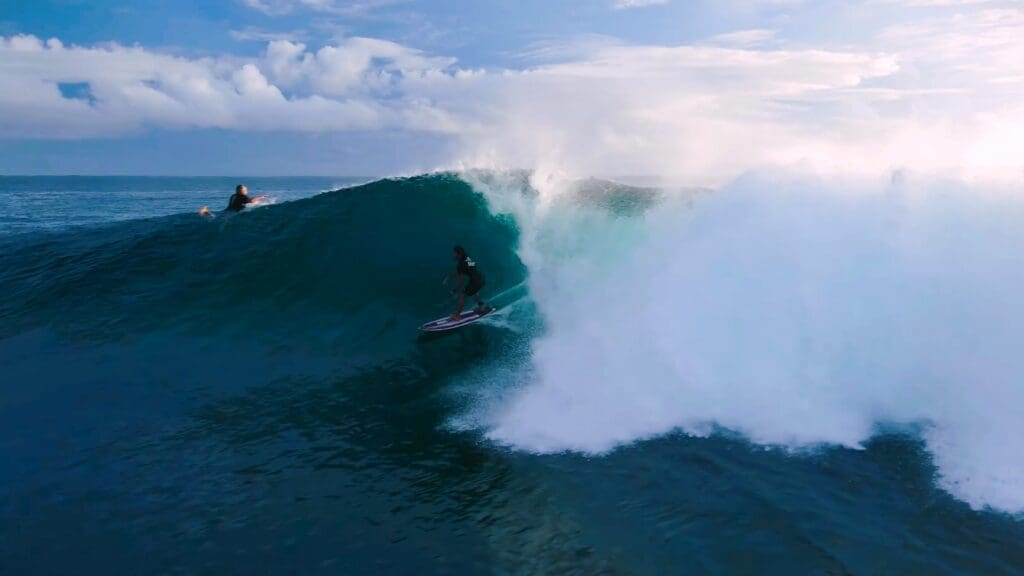
Siargao Island, renowned as the Surfing Capital of the Philippines, beckons wave riders from around the globe to its legendary shores. Famous for its iconic surf break, Cloud 9, Siargao offers an unparalleled surfing experience with perfect barrels and consistent waves that cater to both novice and professional surfers.
As I set foot on this teardrop-shaped island, I was immediately captivated by its laid-back vibe and the warm hospitality of the locals. The island’s landscape, characterized by lush coconut groves, pristine white-sand beaches, and crystal-clear waters, is a slice of tropical paradise.
The highlight of any visit to Siargao, of course, is the surfing. Cloud 9, with its reputation for thick, hollow tubes, is a magnet for surfers looking for a thrilling ride. The surf break’s wooden pier and viewing deck allow spectators to watch surfers tackle the impressive waves up close. For those new to the sport, Siargao offers numerous surf schools where experienced instructors provide lessons in the gentler waves of spots like Guyam and Daku Islands.
But Siargao is more than just a surfer’s haven. The island is also home to stunning lagoons, such as the emerald green waters of Sugba Lagoon, ideal for paddleboarding and kayaking. The Magpupungko Rock Pools reveal themselves at low tide, offering natural infinity pools with crystal-clear waters perfect for swimming and cliff jumping.
The island’s charm extends to its small, bustling towns, where visitors can enjoy local cuisine, particularly fresh seafood, and experience the vibrant island culture. The night brings a different energy to Siargao, with beach parties and live music setting a lively atmosphere.
A visit to Siargao is a journey into a world of natural beauty, adventure, and authentic island culture. Whether you’re riding the waves, exploring the natural wonders, or simply soaking in the relaxed island lifestyle, Siargao provides an unforgettable experience that captures the essence of the Philippines’ island charm.
T’boli Tribal Village, South Cotabato – A cultural village showcasing the T’boli tribe’s traditions
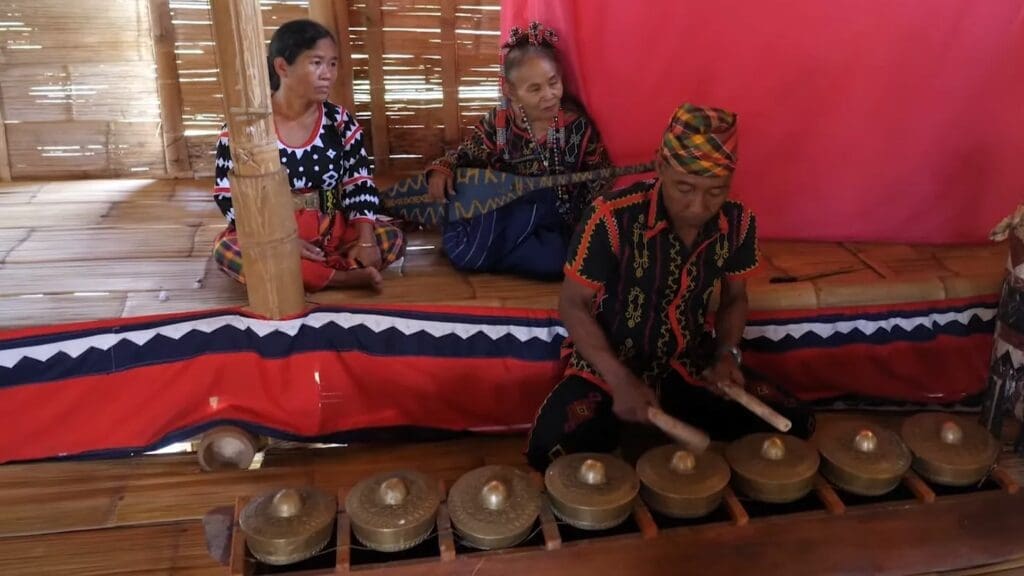
Nestled in the lush landscapes of South Cotabato, the T’boli Tribal Village offers a captivating glimpse into the rich cultural tapestry of the T’boli tribe, one of the indigenous peoples of Southern Mindanao. This unique village serves as a living museum, showcasing the traditions, crafts, and way of life of the T’boli people.
As I wandered through the village, I was struck by the vibrant and intricate traditional T’boli clothing, adorned with colorful beads and intricate embroidery. The T’boli are renowned for their exquisite textile weaving, particularly their T’nalak fabric, a traditional cloth made from abaca fibers and dyed with natural extracts. The intricate designs and patterns of the T’nalak are not just artistic expressions; they are deeply rooted in the tribe’s spiritual beliefs and folklore.
The village offers an immersive experience into the T’boli culture. Visitors can witness firsthand the skillful crafting of brassware, beadwork, and wood carving, each piece telling a story of the tribe’s history and beliefs. The sounds of traditional T’boli music, played with native instruments like the two-stringed hegelung, provide a melodic backdrop to the experience.
One of the most captivating aspects of my visit was the opportunity to interact with the T’boli people. Their warm hospitality and willingness to share their culture left a profound impact. The village elders narrated tales of their ancestors and the tribe’s history, offering a deeper understanding of their customs and traditions.
The T’boli Tribal Village is not just a tourist destination; it is a vital preservation of a unique cultural heritage. The community’s efforts to maintain their traditional lifestyle in the face of modernization are commendable. A visit to the village is more than just a cultural excursion; it’s a journey into the heart of a community that continues to cherish and celebrate its ancestral heritage.
For those seeking an authentic cultural experience in the Philippines, the T’boli Tribal Village is a must-visit. It offers a rare opportunity to witness the living traditions of one of the country’s indigenous tribes and to learn about the rich tapestry of cultures that make up the Philippine archipelago.
Philippine Eagle Center, Davao City – A conservation center for the Philippine Eagle

In the lush outskirts of Davao City lies the Philippine Eagle Center, a sanctuary dedicated to the conservation of the majestic Philippine Eagle, one of the world’s largest and most powerful birds of prey. This center is not just a tourist attraction; it’s a pivotal institution in the fight to save this critically endangered species from extinction.
As I entered the center, I was immediately enveloped in a sense of purpose and dedication. The Philippine Eagle, known locally as the “Haring Ibon” or King of Birds, is a symbol of pride for the Philippines. With its impressive wingspan, piercing eyes, and regal bearing, seeing these magnificent birds up close was both awe-inspiring and humbling.
The center functions both as a breeding facility and a rehabilitation center. Here, injured or rescued eagles are nursed back to health, and efforts are made to breed eagles to increase their dwindling population. The dedicated staff, composed of conservationists and veterinarians, work tirelessly to ensure the eagles’ well-being and to educate the public about the importance of preserving this national treasure.
Walking through the center, I learned about the various threats facing the Philippine Eagle, including deforestation and hunting. The informative displays and guided tours offered deep insights into the eagle’s habitat, behavior, and the challenges in conserving this majestic bird. The center’s efforts extend beyond its boundaries, as they work with local communities to promote forest conservation and sustainable practices.
One of the highlights of my visit was the eagle feeding demonstration. Watching these powerful birds soar and exhibit their natural behaviors was an unforgettable experience. It was a potent reminder of the beauty and fragility of nature, and the urgent need to protect it.
The Philippine Eagle Center is more than just a haven for eagles; it’s a beacon of hope for conservation in the Philippines. Visiting the center offers a unique opportunity to witness conservation in action and to learn about one of the country’s most iconic species. It’s an experience that resonates long after leaving the center, inspiring a deeper appreciation for wildlife and the natural world.
Vinta Ride in Zamboanga – Traditional colorful sailboats of the Moros
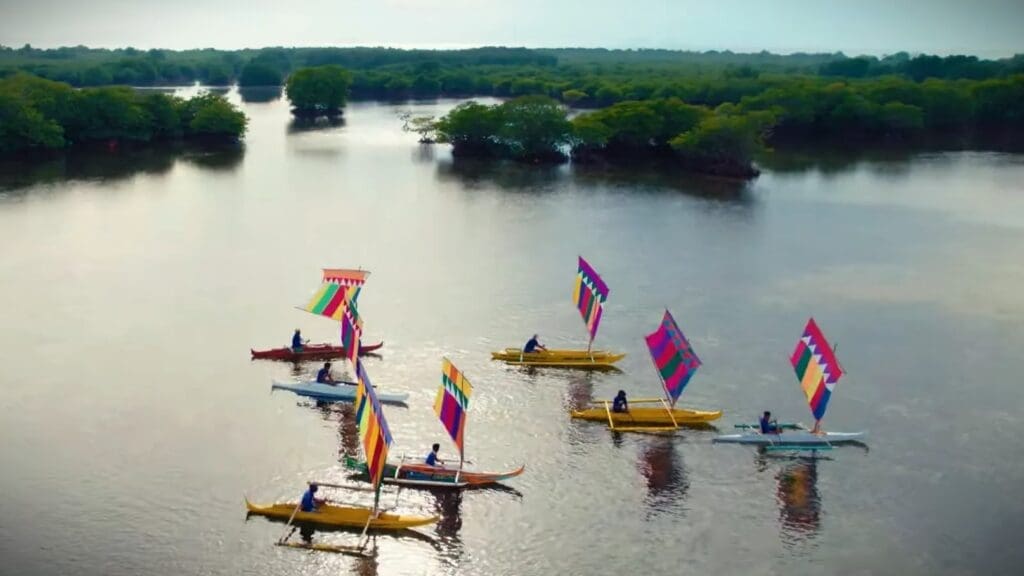
In the vibrant coastal city of Zamboanga, the traditional Vinta ride stands as a captivating symbol of the rich cultural tapestry of the Moro people. These iconic sailboats, with their brightly colored sails patterned in radiant hues, offer a unique glimpse into the heritage and maritime traditions of the southern Philippines.
Embarking on a Vinta ride is like sailing through a living museum, each boat a masterpiece of indigenous craftsmanship and design. The vintas, traditionally used for fishing and transportation, are now a popular attraction for tourists seeking an authentic cultural experience. As I set sail, the wind catching the vivid sails, I was struck by the harmony of tradition and modernity that defines Zamboanga’s coastal life.
The vintas are more than just boats; they are symbols of the Moro people’s identity and resilience. Each sail is intricately crafted, often bearing the patterns and colors that represent different Moro tribes. The experience of riding these traditional boats is a journey into the history of the Moro people, their struggles, and their enduring spirit.
Out on the open sea, the vintas create a spectacular display against the backdrop of Zamboanga’s azure waters. The experience is both serene and exhilarating, as the boats glide gracefully over the waves, their sails a vibrant contrast against the sky. The gentle rhythm of the water and the soft hum of the wind create a sense of peace and connection to the sea, a fundamental element of Moro culture.
For visitors, a Vinta ride is not just a tourist activity; it’s an immersive cultural experience. It offers a chance to engage with local artisans and sailors, hear their stories, and learn about the traditional techniques used in crafting these beautiful vessels. It’s a celebration of the artistic and seafaring heritage that is central to the identity of the Moro people.
A Vinta ride in Zamboanga is a must-do for anyone seeking to experience the vibrant culture and stunning natural beauty of the Philippines. It’s an adventure that captivates the senses and enriches the soul, a vivid reminder of the rich cultural mosaic that makes the Philippines truly unique.
Aliwagwag Falls, Davao Oriental – A series of 84 falls cascading beautifully
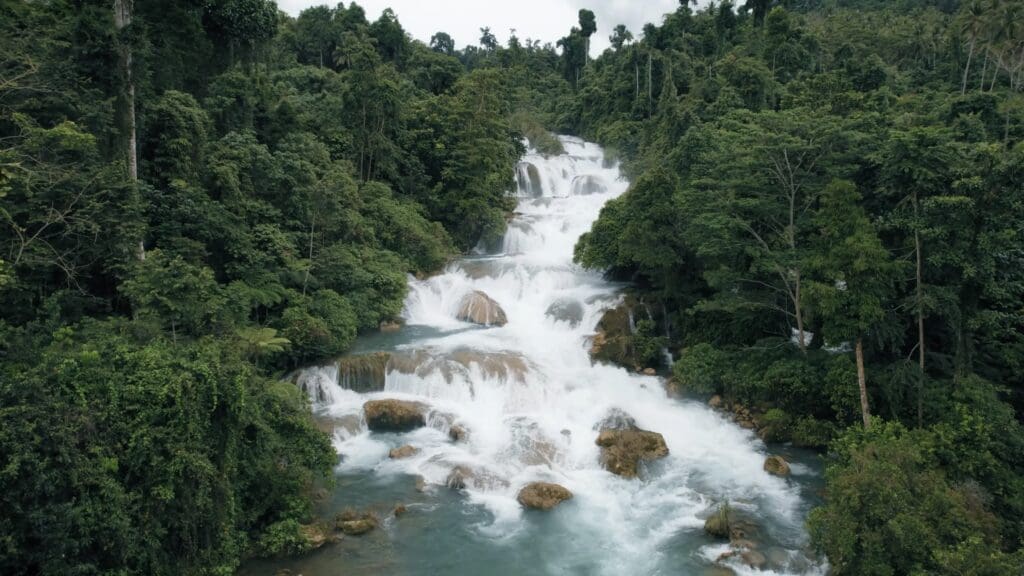
In the heart of Davao Oriental lies Aliwagwag Falls, a breathtaking series of 84 cascades that create one of the Philippines’ most magnificent natural spectacles. As I beheld this majestic waterfall, I was captivated by the symphony of water tumbling down in varying heights and forms, creating a vision of unspoiled beauty and raw power.
Each cascade of Aliwagwag Falls offers a unique visual experience, ranging from gentle streams to powerful plunges, all weaving together to form a stunning tapestry of water and light. The tallest of these falls measures an impressive 22 meters, making for a dramatic centerpiece in this natural masterpiece. The surrounding lush greenery and rugged landscape add to the allure, creating a serene and mystical atmosphere.
Visiting Aliwagwag Falls is not just a visual treat; it’s an immersive experience into the heart of nature. The sound of the cascading water, the cool mist in the air, and the rich scent of the rainforest create a refreshing and revitalizing environment. It’s a place where one can truly connect with nature, away from the hustle and bustle of city life.
For the adventurous, Aliwagwag Falls offers a range of activities. You can explore the various levels of the falls, swim in its natural pools, or even embark on a trek through the surrounding forest. The area around the falls has been developed with eco-friendly facilities, ensuring that visitors can enjoy their visit while preserving the natural beauty of the site.
Aliwagwag Falls is not just a tourist destination; it’s a testament to the Philippines’ commitment to conserving its natural wonders. The falls are part of the Aliwagwag Protected Landscape, an area designated to protect the rich biodiversity and ecological significance of this region. This initiative ensures that the beauty of Aliwagwag Falls can be enjoyed by future generations.
A visit to Aliwagwag Falls is an unforgettable journey into one of nature’s most awe-inspiring creations. It’s a place where the wonders of the natural world are on full display, offering peace, beauty, and adventure to all who seek it. In the cascade of each fall, one finds the enduring spirit of the Philippine wilderness, a beauty both timeless and majestic.
Malamawi Island, Basilan – Pristine beaches with powdery white sand
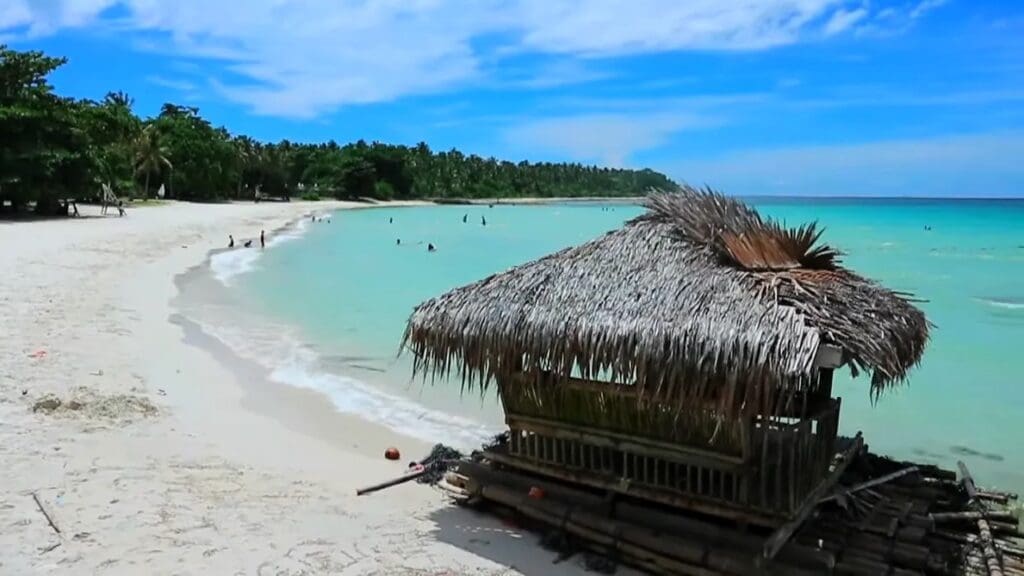
On the southern edge of the Philippines, Malamawi Island in Basilan is a hidden gem with pristine beaches characterized by their powdery white sand and serene atmosphere. As I stepped onto the island, I was immediately struck by the untouched beauty of its coastline – a perfect picture of tranquility and natural elegance.
Malamawi’s beaches are quintessentially tropical, with crystal-clear waters gently lapping against the shore and tall palm trees swaying in the breeze. The soft, white sand underfoot feels like a natural carpet, inviting visitors to stroll along the beach or simply relax and soak in the sun’s warmth. The island’s relative obscurity has preserved its natural state, making it an ideal destination for those seeking a peaceful retreat away from crowded tourist spots.
Surrounding the island is a vibrant underwater world, making Malawi a fantastic spot for snorkeling and diving enthusiasts. The clear waters offer excellent visibility, revealing a rich marine ecosystem teeming with colorful fish and coral formations. For those who love underwater exploration, the island’s reefs provide a mesmerizing experience of the diverse aquatic life.
Malamawi Island is not just about its beaches; it’s an immersion into a more relaxed way of life. The local community, with their warm hospitality and laid-back lifestyle, adds to the charm of the island. Visitors have the opportunity to engage with the locals and learn about their culture and traditions, making the trip to Malawi Island both a recreational and cultural experience.
The serenity of Malamawi Island makes it a perfect destination for meditation and self-reflection. Its natural beauty provides a backdrop for those seeking to escape the fast pace of modern life and find a moment of peace amidst nature’s embrace.
In every grain of its white sand and each ripple of its clear waters, Malamawi Island embodies the pure, unspoiled beauty of the Philippines’ islands. It’s a reminder of the country’s rich natural heritage and a call to preserve these wonders for generations to come. Visiting Malamawi is more than just a holiday; it’s an experience that rejuvenates the soul and rekindles a love for the natural world.
Tinago Falls, Iligan City – A waterfall in a deep ravine
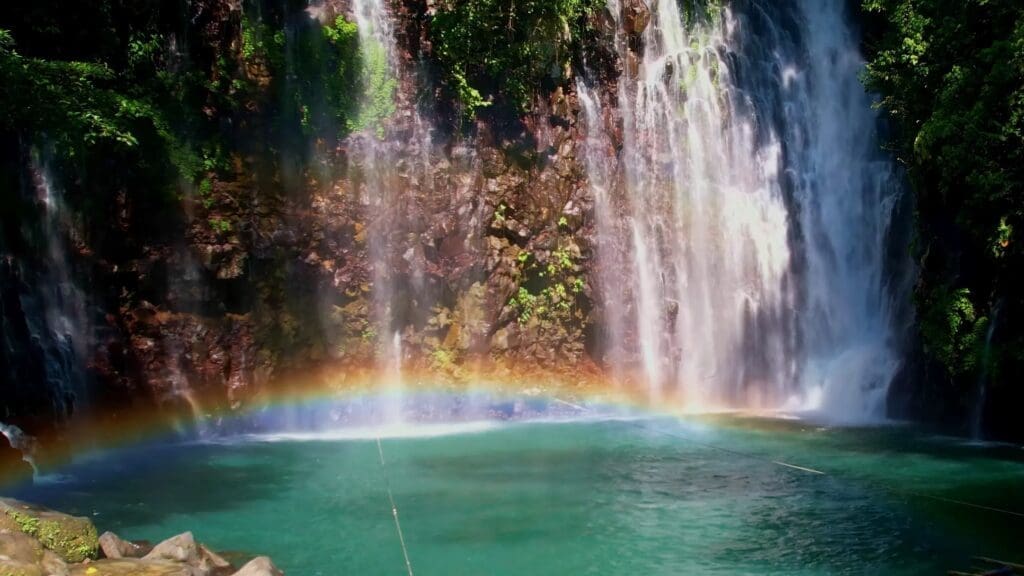
Tucked away in the depths of Iligan City lies Tinago Falls, a breathtaking natural wonder that truly lives up to its name – “Tinago” meaning “hidden” in Filipino. As I embarked on the descent down the winding steps leading to the falls, a sense of anticipation and excitement built up with each step.
Emerging from the lush foliage of the ravine, the sight of Tinago Falls was absolutely mesmerizing. The waterfall cascades gracefully into a deep basin, creating a natural pool with turquoise waters that shimmer under the sun’s rays. The falls, approximately 240 feet high, pour down majestically into the basin, producing a soothing sound that resonates throughout the ravine.
Surrounding the falls is a tranquil haven of dense greenery, making it feel like a world away from the bustling city life. The natural pool formed at the base of the waterfall invites visitors for a refreshing swim. The cool, clear water is not only invigorating but also provides a serene spot for relaxation and contemplation.
For the more adventurous, a raft ride to the base of the waterfall offers a unique experience. Feeling the mist on my face and the powerful rush of the water was exhilarating. The sheer force and beauty of Tinago Falls up close is something that will stay with me forever.
Tinago Falls is not just a tourist spot; it’s a place of natural beauty and tranquility. Whether it’s swimming in the natural pool, enjoying a picnic by the water, or simply sitting and soaking in the peaceful surroundings, Tinago Falls offers an escape into nature’s embrace.
Visiting Tinago Falls is a journey into the heart of nature – a reminder of the power and beauty of the natural world. It’s a hidden gem that captures the essence of the Philippines’ diverse and stunning landscape, and a must-visit for anyone traveling to Iligan City.
Giant Clam Sanctuary, Samal Island – A conservation area for giant clams
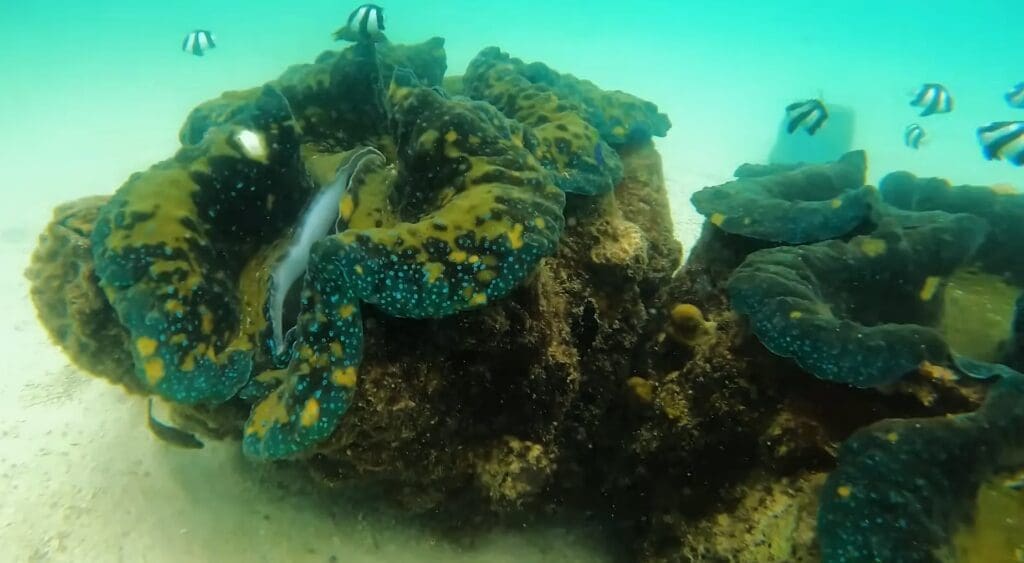
On the pristine shores of Samal Island lies a remarkable marine sanctuary dedicated to the conservation of giant clams. This sanctuary, nestled in the crystal-clear waters of the island, serves as a vital refuge for these magnificent bivalves, playing a crucial role in preserving marine biodiversity.
As I set out to explore the Giant Clam Sanctuary, I was struck by the sheer size and variety of clams nestled on the ocean floor. These gentle giants, some as large as a meter across, are not only a testament to the richness of the Philippines’ marine life but also to the successful conservation efforts being undertaken here.
The sanctuary provides a safe haven for several species of giant clams, some of which are endangered. The efforts of marine biologists and conservationists in breeding and nurturing these clams are evident in the thriving population that calls this sanctuary home. These clams play a significant role in the ecosystem, acting as natural water filters and providing a habitat for other marine species.
Snorkeling through the sanctuary, I was mesmerized by the colorful array of clams, their vibrant hues painting a stunning underwater mosaic. The experience of swimming alongside these serene creatures was both humbling and awe-inspiring, offering a unique opportunity to connect with the marine world in a way that is both intimate and respectful.
The Giant Clam Sanctuary is more than just a conservation area; it’s an educational hub where visitors can learn about marine ecology and the importance of protecting our oceans. It stands as a beacon of hope and a model for sustainable marine conservation, showcasing how human intervention can positively impact the environment.
Visiting the Giant Clam Sanctuary on Samal Island is not only a journey into the underwater world but also a testament to the beauty and resilience of nature. It’s a place where conservation meets recreation, offering a memorable experience that highlights the importance of preserving our natural heritage for future generations.
Lake Sebu, South Cotabato – A natural lake with a significant T’boli cultural presence
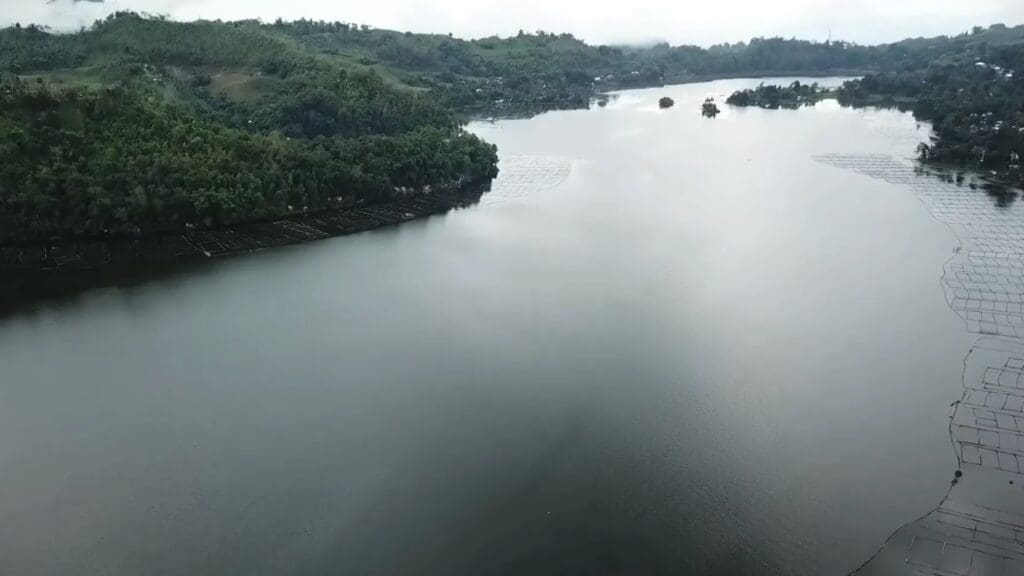
Lake Sebu, nestled in the highlands of South Cotabato, is a serene natural lake that is as rich in cultural significance as it is in natural beauty. Surrounded by rolling hills and lush forests, this tranquil lake is the ancestral domain of the indigenous T’boli people, known for their rich traditions, vibrant textiles, and deep connection to nature.
Exploring Lake Sebu offers a journey into the heart of T’boli culture. The lake itself is a vital source of life and inspiration for the T’boli community. They view it as a sacred place, teeming with folklore and legends that have been passed down through generations. The T’boli are renowned for their traditional arts, particularly T’nalak weaving, a skillful craft that turns dreams into intricate patterns on hand-woven fabric.
One of the most enchanting experiences at Lake Sebu is a boat ride across its placid waters. As I glided over the lake, the calmness of the surroundings and the reflection of the sky on the water’s surface created a sense of profound peace. The lake is dotted with small islands and floating houses, offering a glimpse into the harmonious way the T’boli people coexist with their environment.
The beauty of Lake Sebu extends beyond its waters. The surrounding area is home to stunning waterfalls, each with its own charm and story. The Seven Falls, a series of cascading waterfalls, is a highlight for many visitors. Trekking to these falls provides a refreshing adventure amidst the natural splendor of the region.
Cultural immersion is a key part of the Lake Sebu experience. Visitors have the opportunity to engage with the T’boli people, learn about their customs, and witness their artistic talents firsthand. The T’boli’s music, dance, and craftsmanship are not just artistic expressions but also a celebration of their identity and heritage.
Lake Sebu is more than just a picturesque destination; it’s a living testament to the enduring spirit and culture of the T’boli people. It offers a unique blend of natural tranquility and cultural richness, making it a must-visit for those seeking a deeper understanding of the Philippines’ diverse cultural tapestry. This serene lake is not only a natural wonder but also a cultural treasure that encapsulates the beauty and resilience of the T’boli people.
Britania Group of Islands, Surigao del Sur – A group of 24 islands and islets
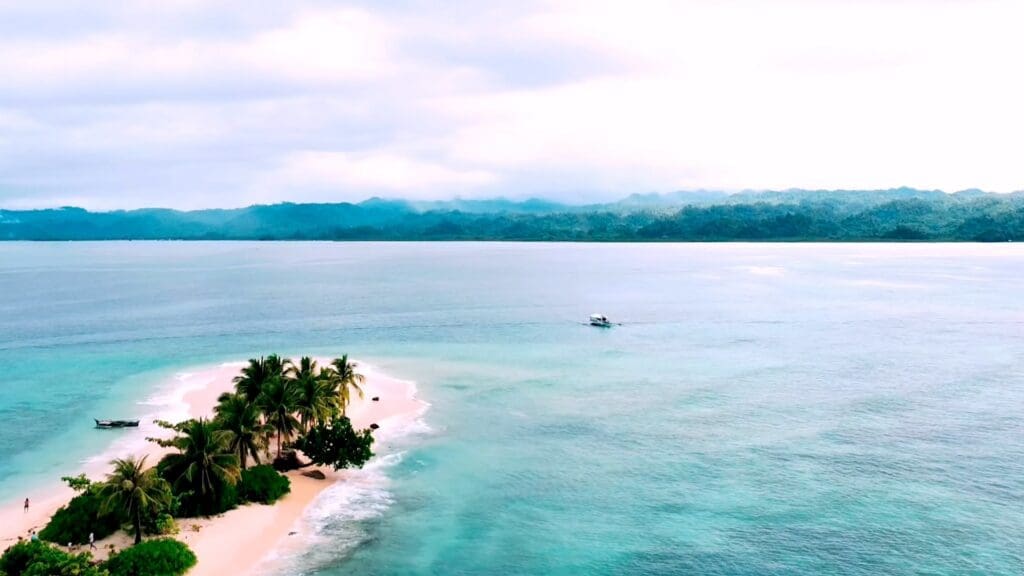
In the shimmering waters of Surigao del Sur lies the Britania Group of Islands, an enchanting archipelago comprising 24 islands and islets, each offering a unique slice of paradise. This relatively untouched group of islands beckons with its pristine beauty, crystal-clear waters, and serene landscapes, making it a hidden gem for travelers seeking a tranquil escape.
As I embarked on an island-hopping adventure across the Britania Group, I was captivated by the diversity and untouched nature of each island. From the powdery white sand beaches to the lush greenery that fringes the shorelines, the islands exude a sense of peace and simplicity. The clear waters invite exploration, revealing vibrant coral reefs and a rich marine life that thrive beneath the surface.
Hopping from one island to another, I discovered secluded coves, picturesque sandbars, and dramatic rock formations. The smaller, uninhabited islets offer a Robinson Crusoe-like experience, where the only sounds are the gentle lapping of the waves and the rustling of the leaves. These islands provide the perfect setting for sunbathing, swimming, snorkeling, or simply enjoying the tranquility of nature.
One of the highlights of visiting the Britania Group of Islands is the opportunity to witness stunning sunsets that paint the sky in hues of orange and pink. As the day ends, the islands transform into a tranquil haven, with the soft glow of the setting sun reflecting off the water’s surface, creating a magical atmosphere.
Despite their beauty, the Britania Group of Islands remains relatively off the beaten path, preserving their unspoiled charm. The lack of commercial development ensures that the islands retain their natural allure, offering a serene and authentic island experience.
For those looking to escape the hustle and bustle of everyday life and immerse themselves in natural beauty, the Britania Group of Islands is a must-visit destination. Whether you’re a beach lover, a nature enthusiast, or simply in search of peace and quiet, these islands promise an unforgettable experience amidst the stunning landscapes of Surigao del Sur. The Britania Group of Islands is not just a destination; it’s a retreat into the heart of nature’s unspoiled beauty.
Grand Mosque, Marawi City: A Pillar of Islamic Faith
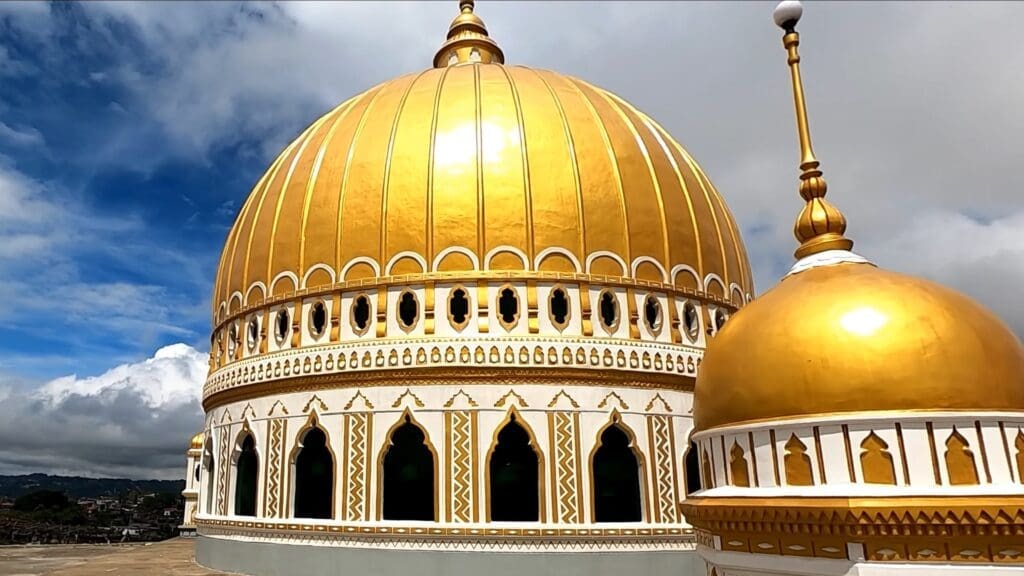
In the heart of Marawi City stands the Grand Mosque, an emblem of Islamic faith and a central figure in the spiritual life of the local Muslim community. As the largest mosque in the city, it serves as a focal point for religious activities and a symbol of the rich Islamic heritage of Marawi.
The Grand Mosque, with its traditional Islamic architecture, is a striking feature of Marawi’s landscape. Its design includes prominent domes and minarets, reflecting the classic style of Islamic sacred architecture. The mosque’s presence is a testament to the deep-rooted Islamic traditions and cultural identity of the Maranao people.
Inside, the Grand Mosque offers a serene and contemplative environment. The spacious prayer hall, adorned with Islamic motifs and calligraphy, provides a place for reflection and communal prayer. The mosque’s role goes beyond being a mere place of worship; it is also a center for religious education and social gatherings, strengthening the bonds within the community.
The Grand Mosque of Marawi is more than just a religious site; it stands as a beacon of resilience and unity, especially considering the challenges faced by the city in recent years. Its significance in the cultural and religious landscape of Marawi is profound, making it an essential landmark for understanding the Islamic heritage of the Philippines.
A visit to the Grand Mosque offers insights into the religious and cultural fabric of Marawi City. It symbolizes faith, community, and the enduring spirit of the Maranao people, making it a must-visit landmark for anyone exploring the rich tapestry of cultures in the Philippines.
Mount Matutum, South Cotabato – An active volcano with a perfect cone shape
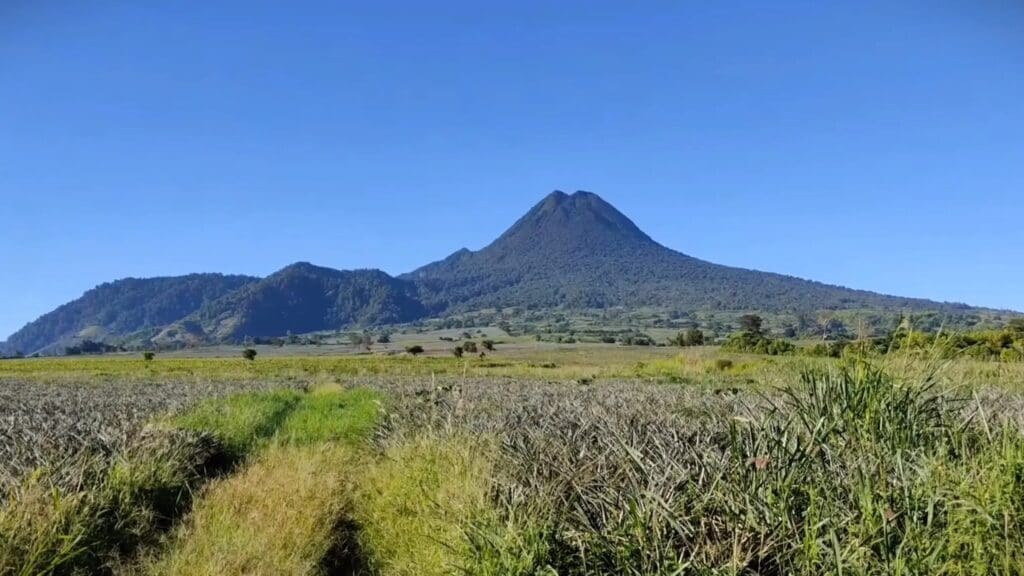
Dominating the landscape of South Cotabato, Mount Matutum is an active volcano renowned for its almost symmetrical cone shape, making it a striking natural landmark in Mindanao, Philippines. This majestic mountain, rising to a height of 2,286 meters, not only captivates with its beauty but also plays a vital role in the local ecosystem.
Mount Matutum is covered with lush forests that are home to a diverse array of flora and fauna, including the Philippine eagle and various endemic species. These forests are not just crucial for wildlife; they also contribute significantly to the local climate, agriculture, and water resources. The mountain’s slopes are dotted with coffee plantations and farms, benefiting from the fertile volcanic soil.
The summit of Mount Matutum offers breathtaking panoramic views of the surrounding landscapes. Hiking to the top is a popular activity, attracting adventure enthusiasts who seek to experience the exhilaration of conquering this imposing peak. The trek provides a unique opportunity to witness the rich biodiversity and the serene beauty of the mountain’s natural environment.
Mount Matutum is also a cultural icon for the indigenous Blaan tribe, who consider it a sacred mountain. The tribe’s traditional practices and beliefs are closely intertwined with the mountain, further adding to its significance.
Visiting Mount Matutum is a journey through stunning natural scenery and an insight into the cultural heritage of the region. It’s a testament to the awe-inspiring power of nature and a reminder of the need to preserve and respect these natural wonders. Whether you’re an avid hiker, a nature lover, or someone interested in cultural explorations, Mount Matutum offers an enriching and memorable experience.
Dahilayan Adventure Park, Bukidnon: An Adrenaline-Packed Escape
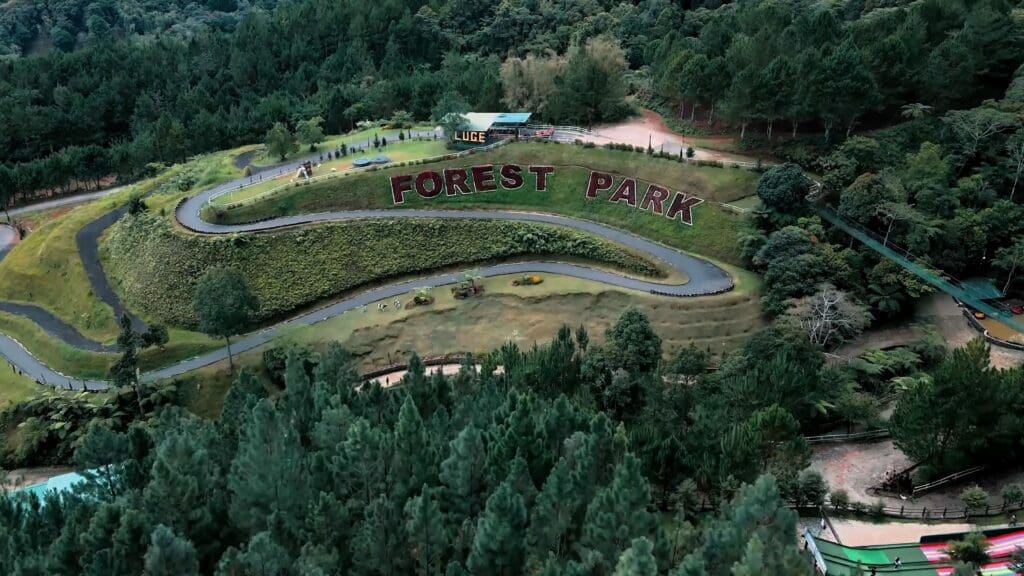
Located in the cool, lush landscapes of Bukidnon, Mindanao, Dahilayan Adventure Park is a haven for thrill-seekers and nature enthusiasts alike. This adventure park is renowned for its exhilarating activities set against the backdrop of stunning natural beauty, offering a perfect blend of excitement and scenic tranquility.
One of the highlights of Dahilayan Adventure Park is its extensive zipline facility, which includes one of Asia’s longest dual ziplines. Soaring at an altitude of 4,700 feet, adventurers can experience the rush of flying over picturesque valleys and rolling hills, all while taking in the breathtaking views of Mount Kitanglad. The feeling of gliding through the air, with the wind rushing past, is both thrilling and liberating, making it a must-try experience for adrenaline junkies.
Beyond ziplining, the park offers a variety of other adventure activities. These include ATV (All-Terrain Vehicle) rides, which allow visitors to navigate through challenging terrains and explore the park’s beautiful surroundings. For those who enjoy a physical challenge, the rope courses and climbing walls provide an exciting opportunity to test your strength and agility.
Dahilayan Adventure Park isn’t just about high-energy activities. It also offers serene spots where visitors can relax and enjoy the cool climate and natural beauty of Bukidnon. The park is equipped with picnic areas and facilities where families and groups can unwind and spend quality time together.
Whether you’re an adventure enthusiast looking to push your limits or someone seeking a refreshing escape from the city’s hustle and bustle, Dahilayan Adventure Park is an ideal destination. Its combination of thrilling activities, stunning landscapes, and tranquil ambiance makes it a unique and memorable spot in the heart of Mindanao.
Jack’s Ridge, Davao City – A historical site turned into a resort and restaurant

Perched atop the hills of Davao City, Jack’s Ridge offers a unique combination of historical significance and modern-day leisure. This site, once a part of the larger Japanese headquarters during World War II, has been transformed into a popular resort and restaurant, providing visitors with a blend of historical insight and contemporary comfort.
The location of Jack’s Ridge is one of its most captivating features. Offering panoramic views of Davao City and the Davao Gulf, it provides a picturesque setting ideal for relaxation and contemplation. As I explored the area, the sweeping vistas of the cityscape below were a constant reminder of the blend of natural beauty and urban development that characterizes Davao City.
At Jack’s Ridge, the remnants of its historical past are subtly integrated into the landscape. Visitors can learn about its significance during World War II, adding a layer of depth to their experience. The site has been meticulously preserved to honor its history while simultaneously adapting to its new role as a recreational destination.
The resort and restaurant at Jack’s Ridge have become a favorite among locals and tourists alike. The restaurant serves a variety of local and international cuisines, allowing guests to dine with a view. The tranquil ambiance of the resort, coupled with the delicious offerings from the kitchen, makes for a delightful culinary experience.
Apart from dining, Jack’s Ridge offers various amenities for a comfortable and enjoyable stay. The resort features accommodations with modern facilities, ensuring a pleasant and memorable visit. For those looking to unwind, the swimming pool and the beautifully landscaped gardens provide a serene environment to relax and rejuvenate.
In summary, Jack’s Ridge in Davao City is more than just a historical site; it’s a destination where history, nature, and modern comfort converge. Whether it’s for a meal with a view, a peaceful retreat, or a chance to learn about Davao’s past, Jack’s Ridge offers a unique and enriching experience. Its transformation from a wartime relic to a place of leisure and learning is a testament to the city’s ability to embrace its history while looking towards the future.
Conclusion
As I wrap up this article, I can’t help but feel amazed by the sheer number of remarkable landmarks that the Philippines has to offer. From Luzon to Visayas, and Mindanao, this country is teeming with natural wonders, cultural treasures, and historical landmarks that are sure to leave a lasting impact on any traveler.
Whether you’re a history buff, a nature lover, or just looking for a new adventure, the Philippines is undoubtedly one of the best destinations out there. So if you’re planning a trip soon, be sure to include some of these must-visit landmarks in your itinerary.
From the iconic Banaue Rice Terraces to the mysterious Enchanted River, every landmark in the Philippines offers a unique and unforgettable experience. So go ahead, book your tickets, and embark on a journey through this beautiful and diverse archipelago. You won’t regret it!
Thank you for joining me on this adventure to discover the best and most famous landmarks in the Philippines. I hope you found this article informative and inspiring. Safe travels!
Explore Beyond Landmarks: Discover the Philippines’ Spectacular Beaches
While exploring these amazing landmarks, you may have noticed that several stunning beaches made the list. But this is just a glimpse of the Philippines’ breathtaking coastal beauty. If you’re eager to dive deeper into the country’s beach paradises, I invite you to check out our comprehensive post on the Best And Most Beautiful Beaches In Philippines. From secluded coves to vibrant beachfronts, this guide will take you on a journey to the most exquisite shores that the Philippines has to offer. Don’t miss it! Visit Best And Most Beautiful Beaches In Philippines for the full experience.
